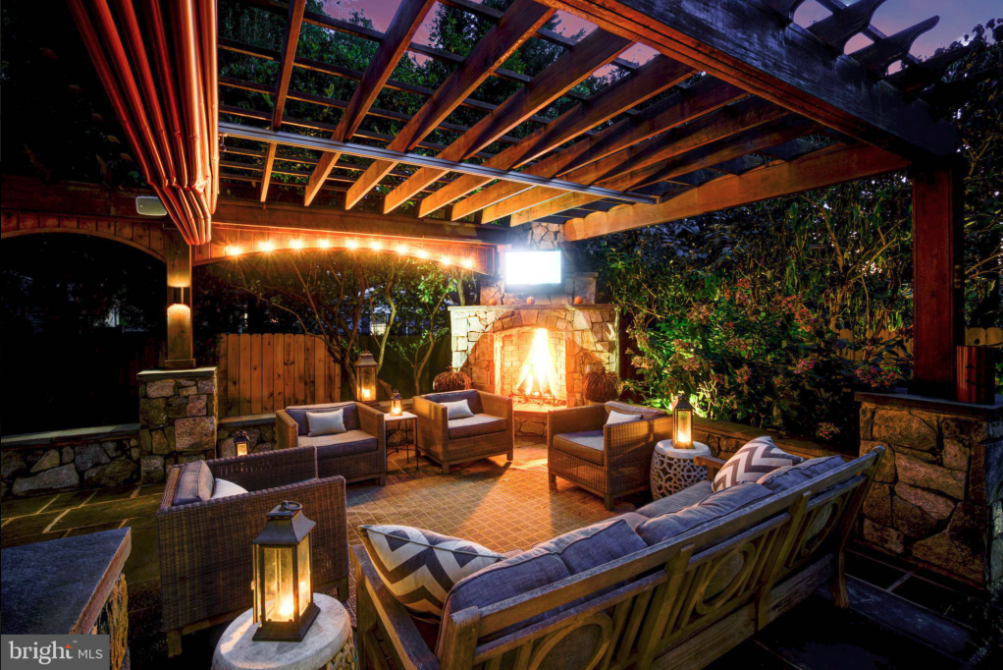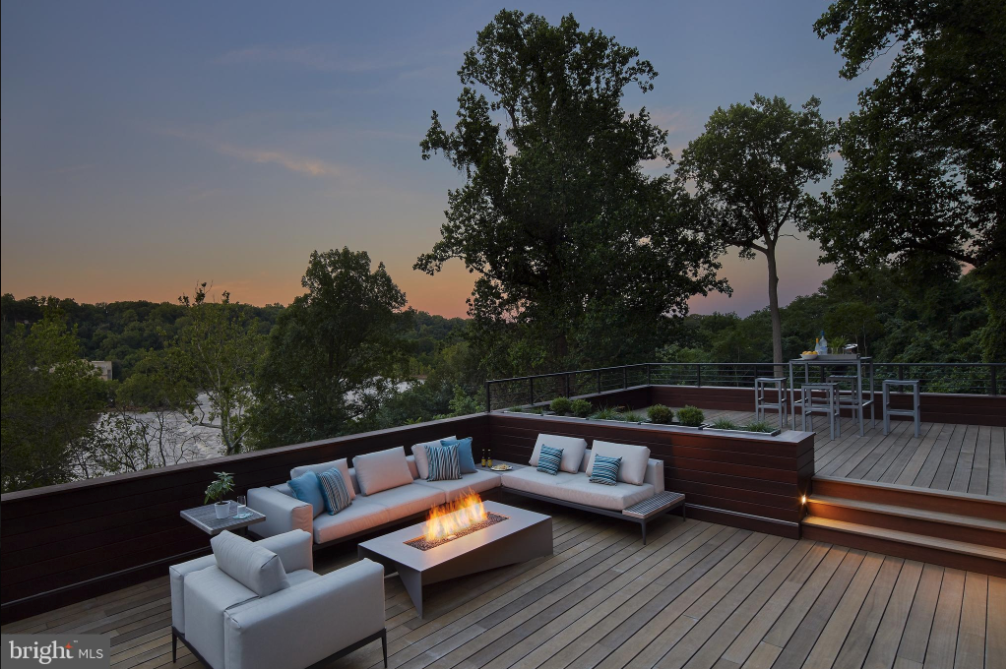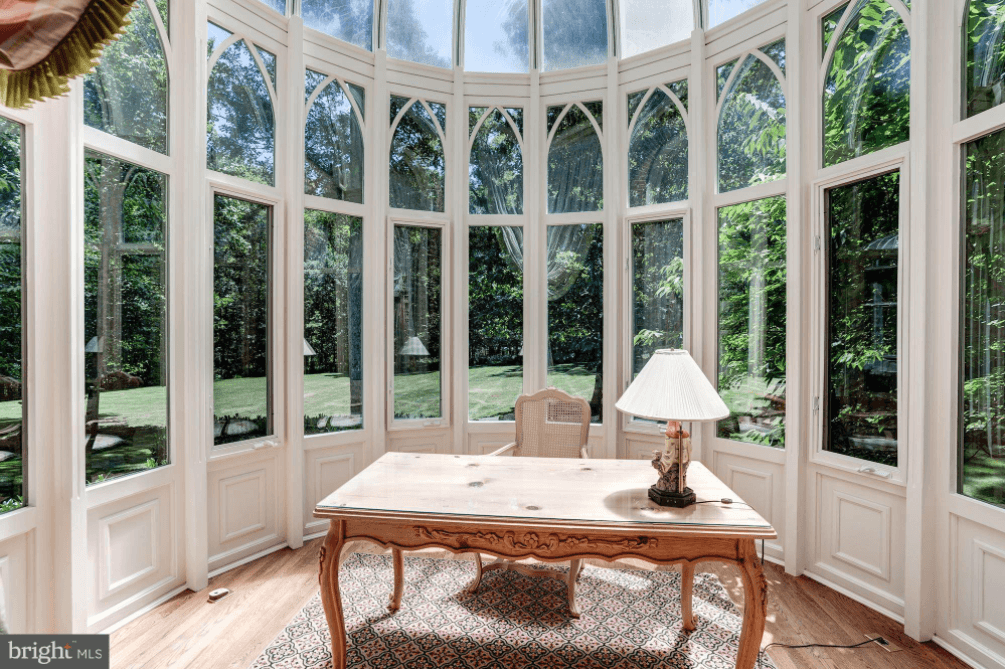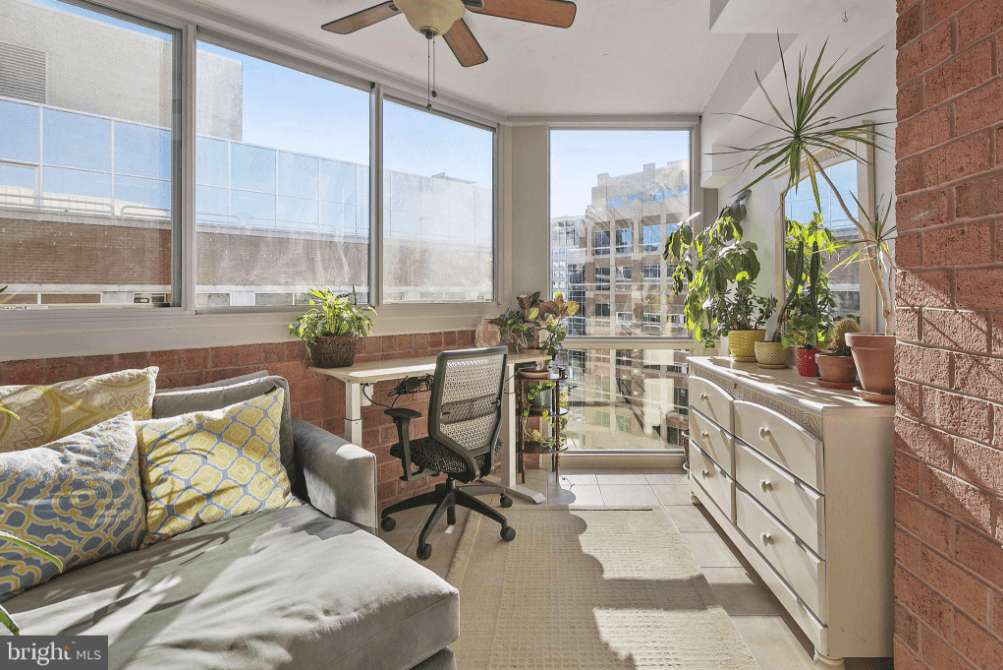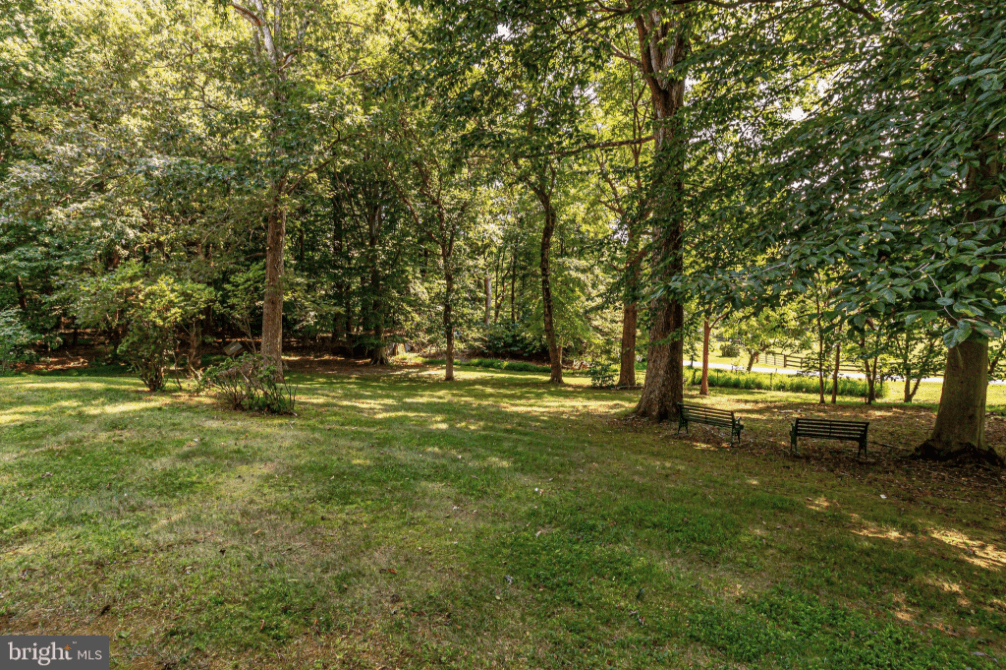9 Enviable Fireplaces On the Market Now in Washington, DC, Maryland, and Virginia

During cold months, between polar vortexes and “bomb cyclones,” we are always looking for ways to stay warm in style. One sure way to stay happy and beat cabin fever is to light up a fire.
Though a fireplace is on the wishlist for many homebuyers, many residents do not actually use them as often as they could. There are some surprising benefits that should stoke our interest in using these features. For example, a recent study by anthropologist Christopher Lynn has shown that even watching a fire video can reduce blood pressure– an effect which is sure to be heightened with the full multi-sensory experience of gazing into a fire.
But why stop there? Relax with a book fireside, invite friends over for warm drinks and treats in adjoining entertaining rooms, or plan a movie or game night with a fiery flare. Whatever activity you choose, we know you’ll find the perfect fireplace inspirations in these Washington area properties.
19725 Ridgeside Rd, Bluemont VA
Listed by June Hambrick, 540-878-8220
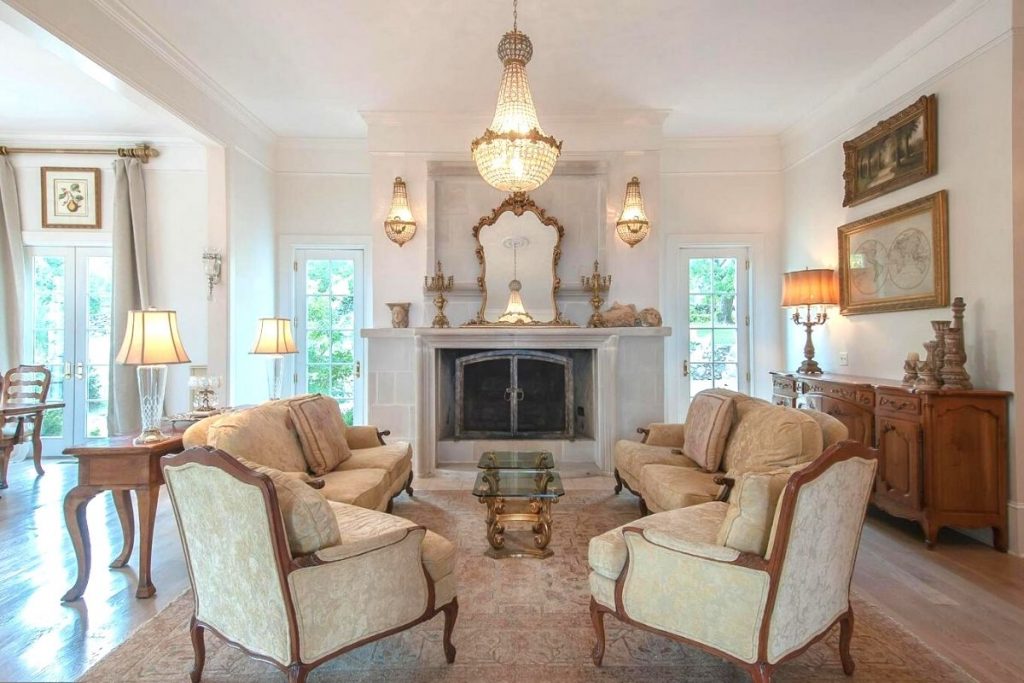
About this home:Priceless views from mountainside location clear to Tysons corner, Dulles area and metro D.C. Pristine Loudoun countryside. Privacy and serenity. Zoned A2, Shows very well.
[divider height=”30″ style=”default” line=”default” themecolor=”1″]
3A N Ridgeview Rd, Arlington VA
Listed by Lisa Joy, 703-408-3450 and Leo Watts, 202-525-7156
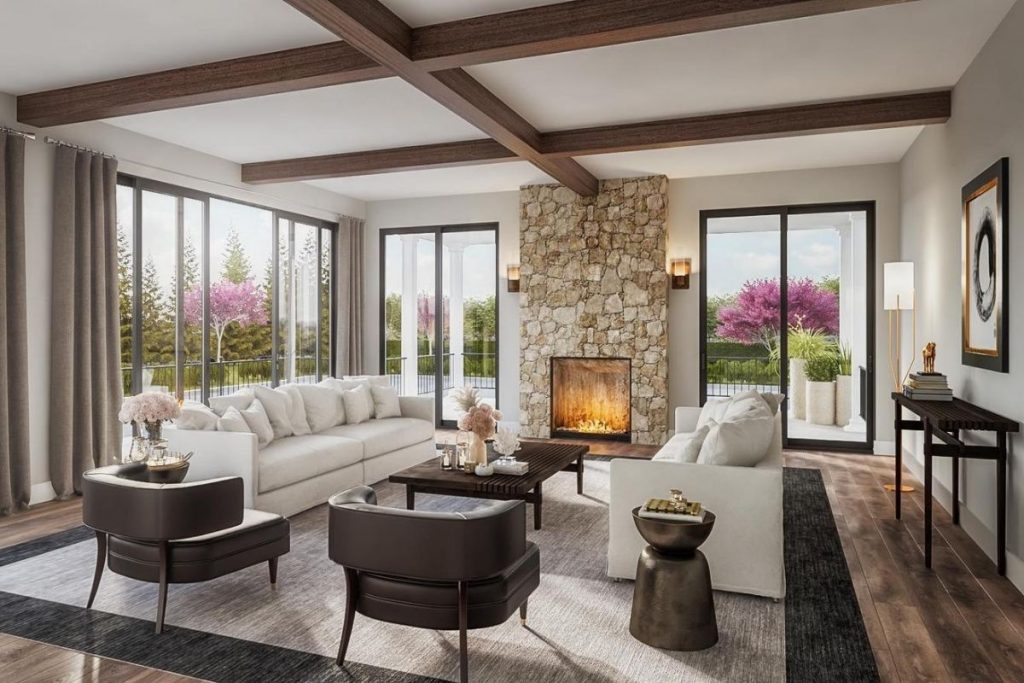
About this home: New Construction Opportunity on Quiet Cul de Sac with Soaring Views of City Nightscape. Large Lot with Timeless Stucco Elevation and Interior filled with Craftsmanship and Light. Still time to be part of the Finish Selections. Three Available Lots and Floor Plans. OPTIONAL Elevator Available. Main Level Library has Full Bath and Walk In Closet so can be used as Main Level Bedroom. Joy Custom Design Build is an Award Winning Custom Builder with Large Portfolio of Finished Residences.
[divider height=”30″ style=”default” line=”default” themecolor=”1″]
14 Caton Ave W, Alexandria VA
Listed by Jen Walker, 703-675-1566

About this home: Expert craftsmanship, fine details and top of the line finishes are evident in every room of the beautiful Del Ray gem! Southern style porch welcomes you to 6 spacious bedrooms, 4 full baths and 3 levels of grand living space. Gourmet kitchen overlooks the large living room with gas fireplace. Take advantage of this excellent location, walkable to “The Avenue” in Del Ray and easy access to metro.
[divider height=”30″ style=”default” line=”default” themecolor=”1″]
211 Prince St, Alexandria VA
Listed by Kate Patterson, 703-627-2166
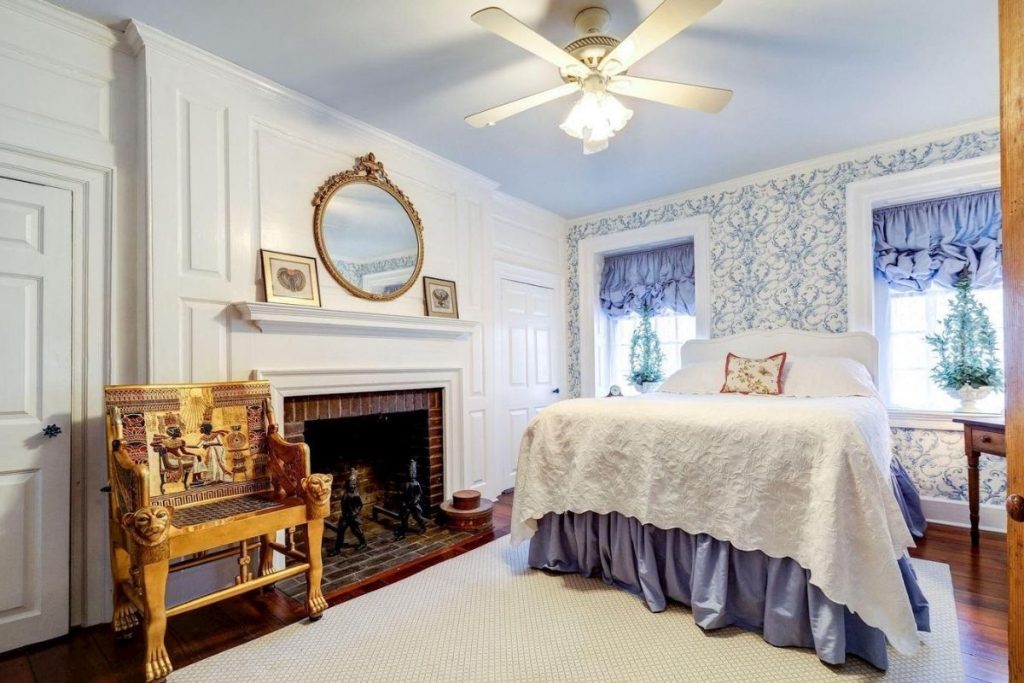
About this home:This outstanding example of early American architecture, located on historic Gentry Row, was built circa 1784 by Captain John Harper. It is almost certain that George Washington visited here and may have attended parties in the gracious formal rooms and danced in the beautifully appointed ballroom, as an early resident, Dr. Elijah Cullen Dick, was amongst his friends. The curved stone steps lead into the elegant entry hallway, opening to the formal living room and dining rooms, separated by a gorgeous keystone arch. Each of these spacious front rooms is graced with wood burning fireplaces, deeply articulated moldings, gorgeous heart pine floors and high ceilings. The eat in kitchen features new custom cabinets, granite countertops, stainless steel appliances and newly installed flooring, a gas fireplace on a raised hearth and French doors to the brick walled garden. On the second level, sunlight streams into the grand ballroom from the three windows across the front of the house, enhanced by a stately fireplace on the west wall. The third floor offers a sun drenched master bedroom with en suite bath and fireplace, as well as a third bedroom and hall bath. The fourth floor opens to a fabulous bright and airy fourth bedroom, with arched faux stone feature, resembling a massive fireplace bracketing the bed in this room. The seven wood burning fireplaces are located in the living room, dining room, ballroom, library, master bedroom, second and third bedrooms. There is an additional gas fireplace in the kitchen, adding warmth and ambiance to the kitchen eat in area. The Dr. Dick house is an outstanding example of early Alexandria architecture, built to last for centuries and perhaps even more charming today than in the 1780’s
[divider height=”30″ style=”default” line=”default” themecolor=”1″]
221 N Royal St, Alexandria VA
Listed by Ann Duff, 703-965-8700
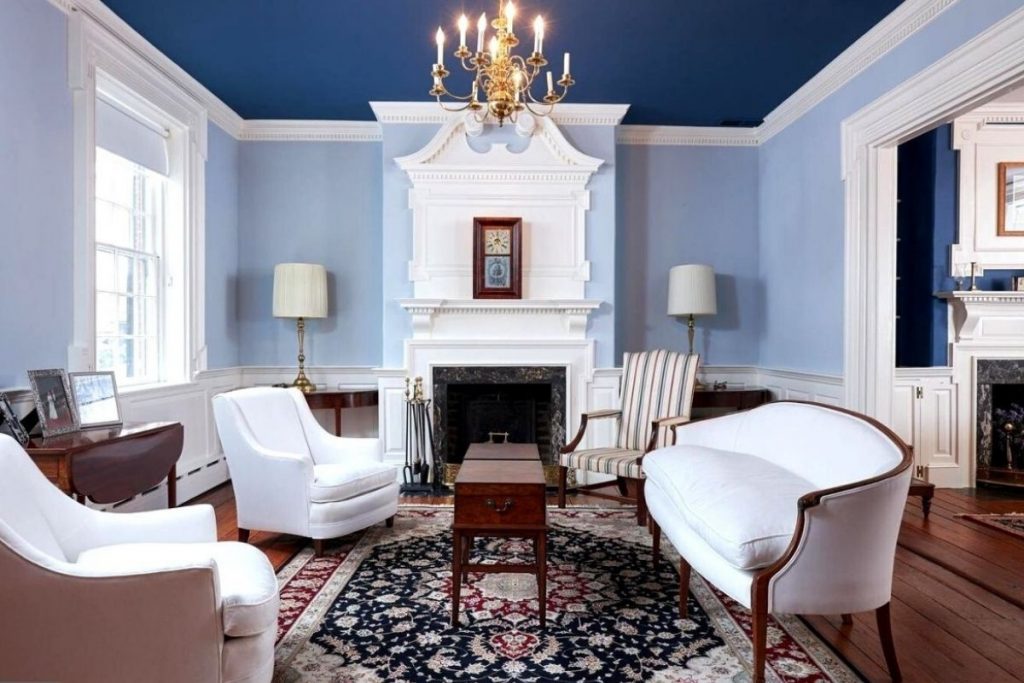
About this home: Satisfy your keen appreciation of history and early Alexandria life with this striking and solid 4-bedroom, 3.5 bath, brick Federal home offering gracious rooms with tall ceilings, time-honored floors and exquisite woodwork. A rarity lies in the Southern open-air sleeping balcony that embraces the deep side and rear gardens and quiet library refuge while the brick floored eat-in kitchen evokes tales of whispered history and bustling life. Even the lower level with 2nd kitchen and recreation room is ready for another century of your new stories and adventures. Detailed brochure with history and room dimensions available at the home and on Ann’s website.
[divider height=”30″ style=”default” line=”default” themecolor=”1″]
735 N Fayette St, Alexandria VA
Listed by George Myers, 703-585-8301

About this home: Spacious Contemporary 4 level luxury town home with attached two car garage in the heart of Old Town! Three bedrooms, two full, and two half baths plus a large rooftop terrace overlooking the city complete the package. The entry level room serves as a separate office, guest suite for au-pair, parents, or out-of-town guests. Discreet custom wine storage under the stairs. The second level gourmet kitchen includes extensive updates and upgrades – new appliances, wine and beverage storage, an expansive island for entertaining and a living area boasting a beautiful custom gas fireplace. High ceilings on all levels flood this end-unit south-facing home with light from three sides; south, west, and north. The third level primary bedroom includes an en-suite bath with upgrades, whirlpool tub, and separate rain shower. A second bedroom offers private bath and closet space. The open upper fourth level offers flexible space for third bedroom, family living or entertaining. Located just two blocks to the Braddock Metro, the commuting options are unparalleled. Local eateries abound with Bastille, Mason Social, Chop Shop Taco, Lena’s Wood Fired Grill and Lost Dog Cafe are among the numerous options.
[divider height=”30″ style=”default” line=”default” themecolor=”1″]
1834 Connecticut Ave NW, Washington DC
Listed by Gerry Gretschel, 202-494-7918
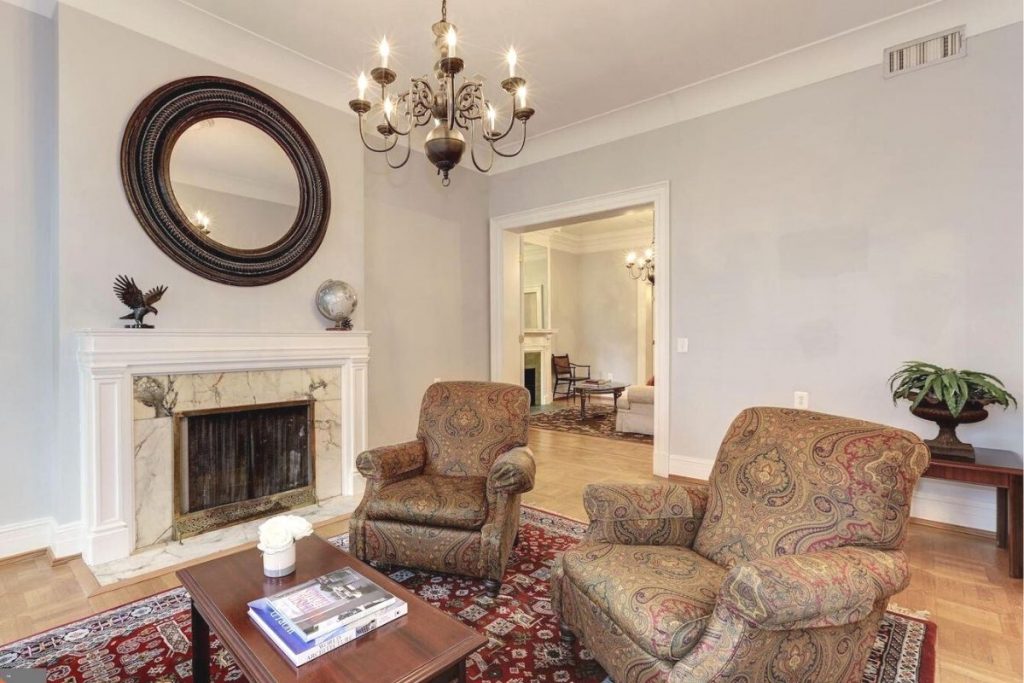
About this home: Built in 1906 by prominent Washington builder, John H. Nolan, as his primary residence, this Kalorama home was thoughtfully renovated restoring all of the original woodwork throughout. A grand staircase, hardwood floor inlays, gorgeous trim details and crown moldings, and 7 beautifully detailed fireplace mantels grace this 6,400+ square foot home over 4 expansive levels. Featuring 10 bedrooms, 7 bathrooms, 2 spacious main level living areas, an oversized dining room, and plenty of storage, the home also offers rear onsite parking for 3 cars. 1,600+ square feet of lower-level living space includes its own kitchen, laundry, one full bath, one-half bath, and separate entrances onto Connecticut Avenue and the rear alley…the perfect 1-bedroom apartment. Roof, electrical, heating, and cooling systems were replaced in the last 10 years. The RA-4 zoning designation offers the opportunity to use this property as either a premier residence, live/work space, or as condominiums in one of the most coveted and prestigious neighborhoods in the city. Owner related to agent.
[divider height=”30″ style=”default” line=”default” themecolor=”1″]
5214 11th St N, Arlington VA
Listed by Betsy Twigg, 703-697-4391
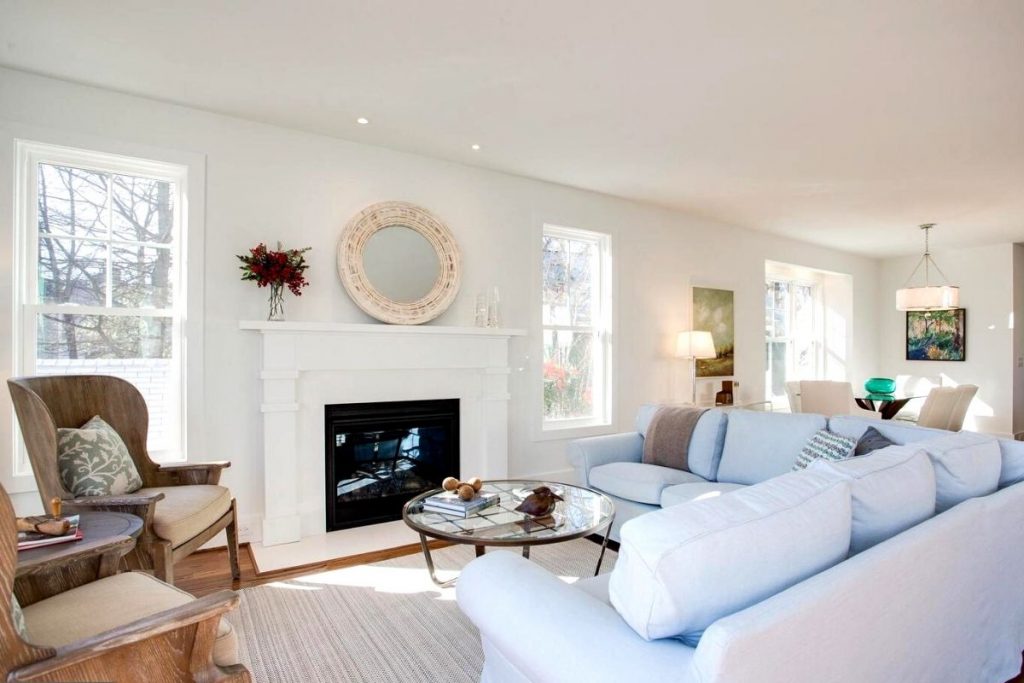
About this home: *** Quality built by A&N Homes, this new 5 bedroom, 4.5 bath home has an open main level with French doors leading to a large deck. The level, fenced yard has been sodded, screening trees have been added, making it ready for a swing set and fire pit.*** Desirable details: Pella double hung, Low E windows; sturdy, non combustible HardiePlank siding; moisture and rot resistant, low maintenance MiraTEC exterior trim; architectural shingle roof***two zone heating and cooling for comfort and energy efficiency; both gas fireplace and range hood vent to the outside;***solid hardwood floors, stained and finished in place, on the main and upper levels; ceramic tile bathrooms;***sleek Bertazzoni appliances with professional gas range; Shrock cabinets with silent close drawers; insulated, drywalled, and painted garage has high ceilings, a window, and opens directly to main level mudroom –so convenient for bringing children and groceries into the home***walk in pantry and two large, finished storage closets in the lower level;***Lower level has multiple large windows, scratch, child, and pet resistant Coretec LFV flooring; high ceiling, recessed lighting*** A home of enduring value in a most desirable location.
[divider height=”30″ style=”default” line=”default” themecolor=”1″]
38780 Chelten Lane, Middleburg, VA
Listed by Bradley Clarke, 703-220-5707 & Elizabeth Coopersmith, 703-328-5430

About this home: Design based on Southern Living’s 2004 House of the Year. With separate guest house total of 5 baths, 5 half baths, and 10 garages. Guest house w 1 1/2 BA. Greenhouse. Extensive landscaping. 30 acres east side of Middleburg. Orange County Hunt. Outstanding views across a very private valley. Horses Cattle livestock allowed. W/guest house there are 5 BR, 5FB, 5 half Baths. GARDENS ARE STUNNING IN SPRING AND SUMMER!! Awesome setting in a very private valley. Come home to a vacation every day.
[divider height=”30″ style=”default” line=”default” themecolor=”1″]
For all of our incredible homes on the market now, click here.
Don’t miss a post! Get the latest local guides and neighborhood news straight to your inbox!
10 Steps to Keep in Mind if You are Thinking of Renovating / Remodeling
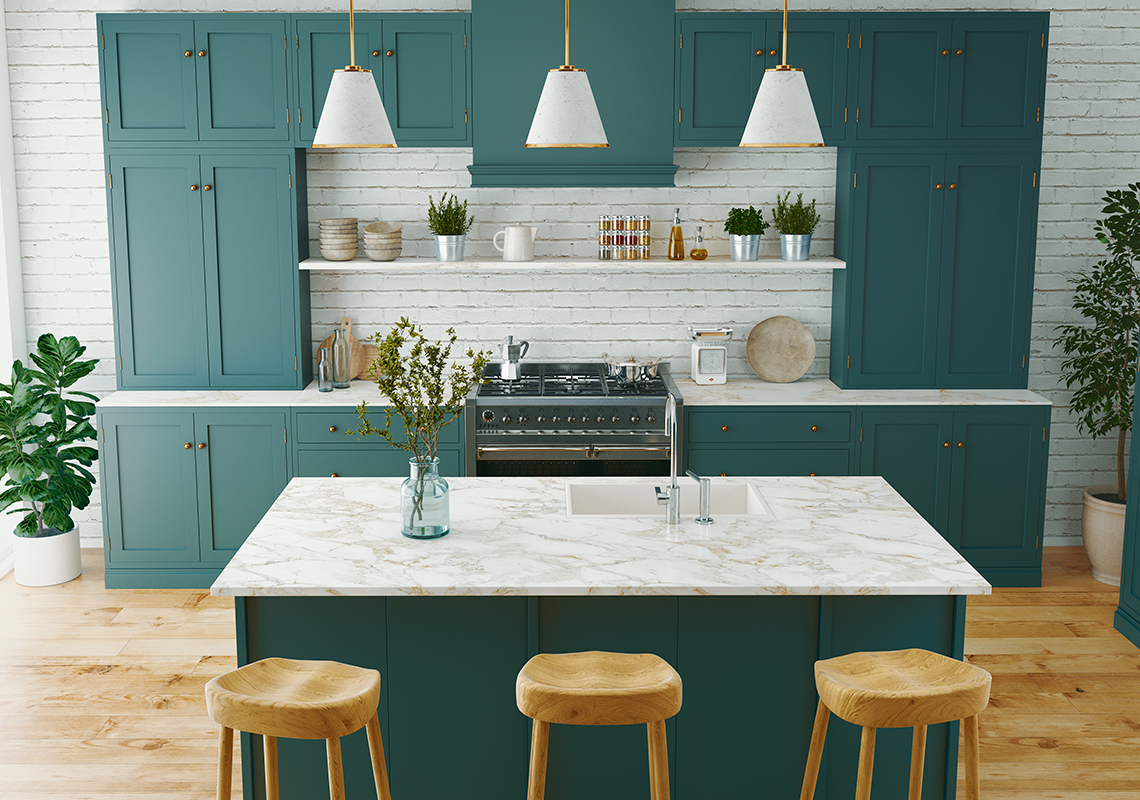
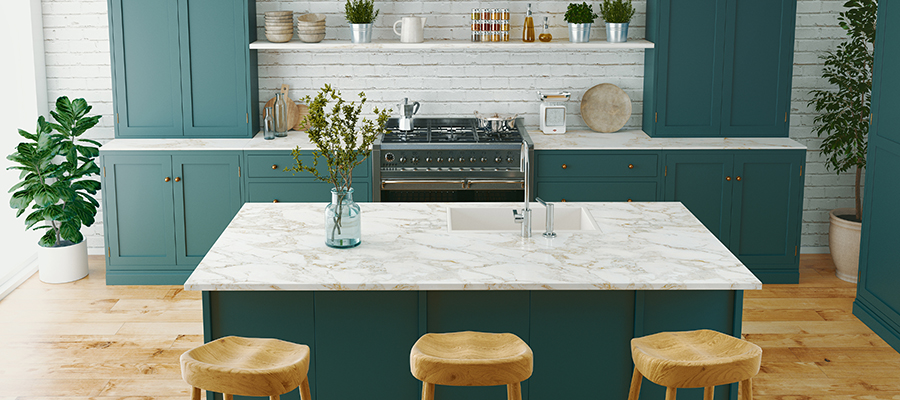
According to Merriam-Webster, “remodel” is “to alter the structure of; to remake.” Whereas “renovate” is “to restore to a former better state (as by cleaning, repairing or rebuilding).”
So, I hear they aren’t making any more land. Maybe that’s why it’s so expensive. It must also be why some people find themselves looking to remodel or renovate an “improvement.” Did you know that’s what a building structure, like a house, is? If you look at your tax record, there is a reference for tax on the land and one for tax on the improvement. That improvement is your house. And, let’s face it, some “improvements” are in serious need of a remodel or renovation!
Not sure you want to buy, or can’t afford to buy the kind of home you want now? Consider remodeling or renovating. It can be a good strategy and longer-term plan particularly well suited if you love where you currently live or if there is a particular area you like but you can’t find a home that meets your needs. Buy one that COULD suit your needs later – and plan to remodel or renovate. Create the home you want – tailor it to fit your needs. Buy the rambler and in five years “pop the top” to create a colonial! Add a new roofline to that Cape Cod making true, usable rooms in the attic… You get the idea.
I recently visited a client named Jill and was reminded what a great strategy this can be. Jill and her husband love their neighborhood and don’t want to leave but are out of space and tired of the style of their home with its dated features and what seems to be an unusable hillside yard. Moving to a bigger and more contemporary home is cost-prohibitive. So, we strategized and discussed staying and remodeling, adding, and maximizing that hillside. If this sounds familiar, you’re probably wondering, what should I consider?
1. Make sure you really like what the home could be and the overall location.
2. Make sure that the neighborhood can support a big remodel or renovation.
Realtors always think future resale! Will your planned updates make sense?
3. If there is a homeowners association, will the project you’re considering be allowed?
You’ll need to check the community by-laws carefully.
4. Set a budget.
While often not as expensive as buying, renovating is not cheap – especially since the recent pandemic has disrupted supply chains.
5. Consult smart, experienced professionals.
Do you need an architect? Builder? Class A contractor? Landscape architect? Interior designer / space planner? Yes, you will spend some money, but I have learned, first-hand, that you will make up for it in errors you would have made without the assistance of these qualified professionals. They can save you costly mistakes and time, not to mention stress! Another bonus is they often get discounts on materials, furniture, finishes, or services that you would not get as a member of the general public. Professionals can help you realize goals that are important to you. Do you want to build green or use recycled or reclaimed material? Carry along a certain style or theme throughout? Maybe you want designated spaces for your hobbies? They can help you achieve all of this. As a Realtor, I can’t tell you how often I’ve heard, “I wish I would have consulted with someone…” about some perceived mistake. You will have a better product and more enjoyable space in the end, if you consult with quality professionals.
6. Come up with a game plan and be specific and realistic
What can you do when? How long will it take?
7. Consider unforeseen costs.
Will you have to move out of the house for a while and will you need movers to help? What about storage costs for your belongings?
8. Make sure you have the appropriate insurance on your property if you will have people there working.
9. Don’t spend all of your money on the inside and leave no funds for the outside.
We have all seen the giant castle on a barren piece of land! Landscaping sets the stage, frames the home, invites and welcomes, and softens hard edges… These days, our outside spaces have proven to be more important than ever. They are our escape from home school, Zoom meetings, and a safer space to visit with friends.
10. When it is done… ENJOY your improved “improvement”.
As we have learned this year – there may come a time when you spend more time in your home than you would have ever imagined!

Ann McClure is a licensed real estate agent in Virginia and Maryland with McEnearney Associates, Inc. in McLean, VA. If you would like more information on selling or buying in today’s complex market, contact Ann at 301-367-5098 or visit her website AnnMcClure.com.
Take a look at our website for all of our listings available throughout Washington, D.C., Maryland, and Virginia.
Don’t miss a post! Get the latest local guides and neighborhood news straight to your inbox!
Playsets, Pools, and Patios… What is the next pandemic must-have for your home?

Still can’t find paper towels at your local Target? Me neither. The pandemic has caused many everyday items that we take for granted to literally fly off the shelves.
We saw it this summer with playsets and trampolines, but the craze for outdoor enjoyment extended beyond kids play equipment to the outdoor assets a residential property boasted (like pools and patios). What could possibly be the next must-have to make your stay-at-home experience more tolerable this winter?
Firepits
Those looking to continue using their outdoor spaces will need to seek out warmth in some form. As long as it is coming from the soothing crackle of a wood-burning firepit or a gas-powered flame – not body heat less than 6 feet away – you will be in good company. These houses are ready for outdoor entertaining on any starry quarantine night.
Spectacular Sunrooms
While it might be hard to find electric heaters or faux fireplaces this winter, now is the time to outfit your three-seasons sunroom in order to maximize its use. Take a look at these spectacular sunrooms that will bring some more light to your quarantine days.
Access To Trails
Hiking in the winter is one of the DMV’s best kept secrets. The quiet and solitude is good any time of year, whether you are walking your dog or trying to tire out your kids in between virtual learning sessions. Check out these local homes with easy access to local trail:
Whether your must-haves include firepits and sunrooms, or you would like a bigger kitchen and a home office, contact me today to explore your options.

Mackenzie Horne, MBA is a licensed REALTOR® in the Commonwealth of Virginia with McEnearney Associates in McLean. Send Mackenzie a message at 571-594-9136, mhorne@mcenearney.com, or @MackHorneRealtor.
To Sell My House Do I Have to Neutralize Everything?
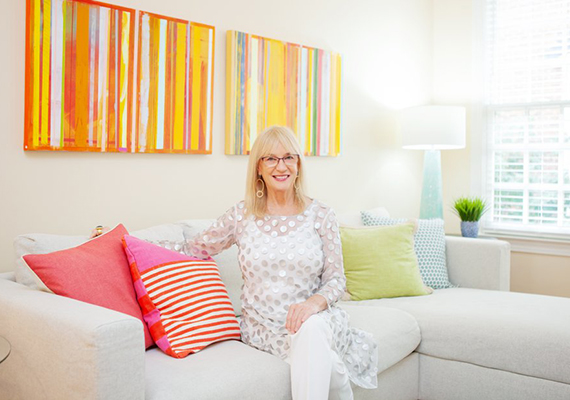
Question: I am getting my house ready to put on the market and wanted to ask if everything really needs to be all beige or gray?
Answer: The best way to answer this question is…it depends upon the type of property, the target buyer pool, if you are using your furniture and accessories, or if it will be staged.
When I am working with a seller, my first step is to have them give me a tour of their home to discuss what they are planning to keep, move, give away or sell. We also review the paint colors, artwork, accessories and bedding. I then come back on my own and walk through the house making a list of suggested repairs, painting, modifications, items to keep in the same room, items to move elsewhere, items to put into storage, and options for staging. Then we get together to review and make decisions on how to move forward.
I generally suggest a neutral wall color throughout the house. It does not have to be the same color in every room, but a pallet that keeps the home light and bright and flows nicely from room to room. In cases where each room is a different bold color, it can be a distraction to the potential buyer and an expense that they prefer not to incur before moving into their new home.
I personally have a lime green kitchen and a hot pink master bathroom and would definitely need to make some changes before putting my own house on the market.

With neutral paint, bedding, shower curtains and towels, carpet, or in most cases furniture, you can always add color and personality with your artwork and accessories. I just sold a home in Old Town Alexandria with creamy white walls, light hardwood and tile floors, and white blinds. We used grey and white linens and white towels, and brought in large colorful contemporary art and fun accessories to make it pop! The photos and feedback were fabulous and it sold in a few days.
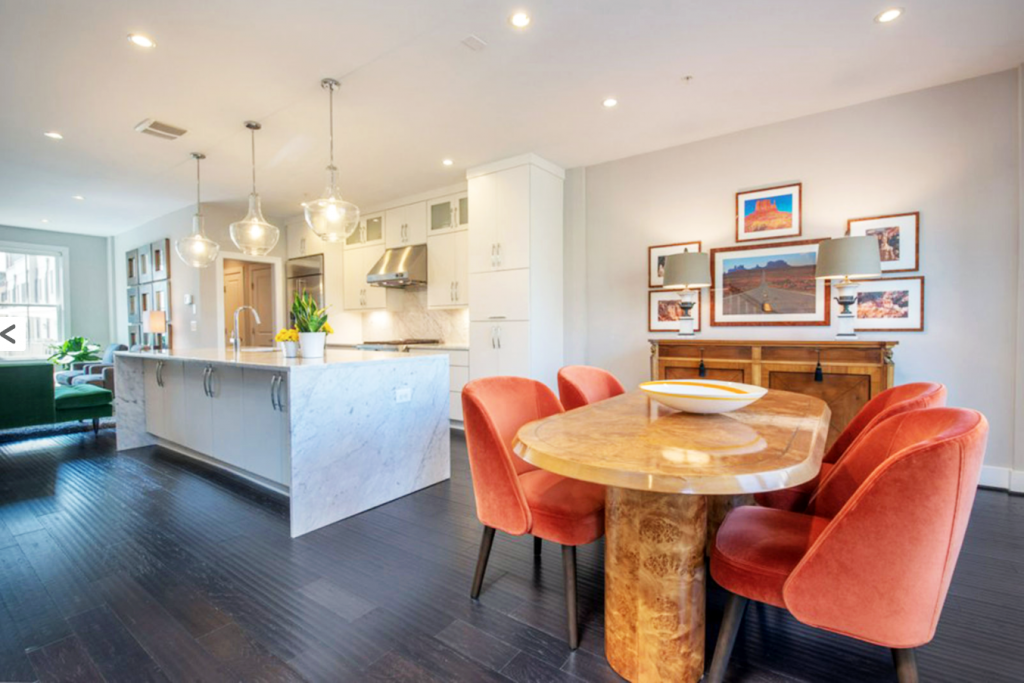
In another listing, the contemporary townhome had dark hardwoods, white cabinets and countertops, light grey walls and beautiful neutral tile. The furniture, artwork, and accessories were bright greens and oranges. It was gorgeous!
In other situations, however, I have worked with sellers that, like me, love colorful walls and bold artwork and accessories, and were not open to making changes. The feedback I received from potential buyers was that they could not picture themselves or their furniture in the house, and the listing lingered on the market until the price or condition was modified.
Another thing to keep in mind is that most buyers keep up with TV shows, social media, and magazines about flipping houses, before and after makeovers, and how to decorate a new home. They will feel a neutral background offers them more options.
Whether you decided to go with a completely neutral look, or one with colorful accents, keep in mind that in order to get top dollar, your home should be move-in ready.
If you would like a professional, confidential evaluation of your home, please give me a call. I am happy to meet with you, tour your home, and offer suggestions for updates, repairs, or staging prior to listing your home.
Good luck!

Lisa Groover is a licensed real estate agent with McEnearney Associates, Inc. in Old Town Alexandria, VA. Having had seven golden retrievers since moving to Alexandria in 1989, she is dedicated to helping other dog owners through the challenges of renting, buying and selling their home..
Don’t miss a post! Get the latest local guides and neighborhood news straight to your inbox!
Should I Stage My Home When I List It For Sale?
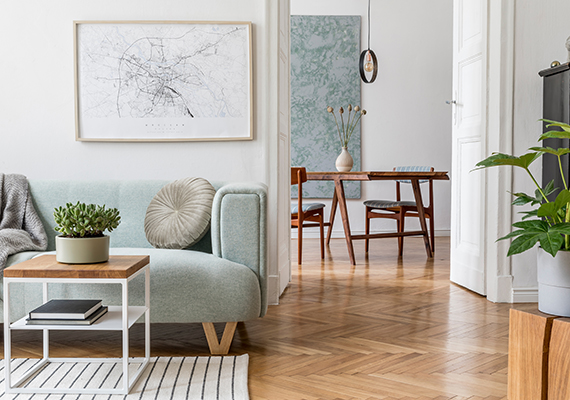
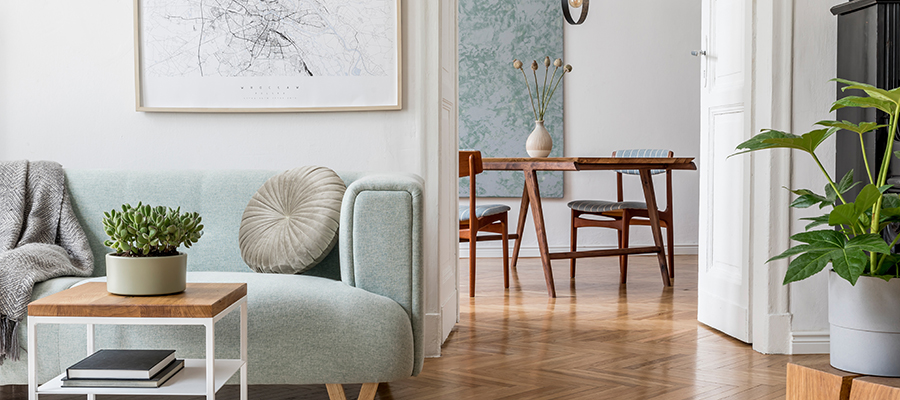
At some point in every listing appointment the topic of staging comes up. Should I stage? Is it worth the money? In a word: absolutely!
There are countless articles and statistics that speak to the return on investment for every staging dollar spent. Professional stagers know how to optimize the home’s layout and visual impact, both in photographs that attract more buyers, and in the “wow factor” you experience when you walk into the home. A well-staged home is often sold before the buyer leaves the main floor. First impressions can mean everything!
What is staging?
Staging is the process of preparing a home for sale, and it can be as simple as decluttering, or full-service professional staging. Staging can also include painting and remodeling – from a little touch-up paint to a new kitchen – it’s all staging! An investment in staging depends on the home’s condition and the means and goals of the sellers.
As a Realtor, bringing up the need for staging can be tricky. In some cases, this is likely the most uncomfortable conversation we will have with you! While we know from past experience that homes staged with fresh paint, neutral furnishings and carefully arranged accessories tend to sell faster and for more money, we know it can feel personal to be told to make these changes to your personal space. (It’s not personal!)
There are many levels and elements to staging.
Often stagers are brought in for a consult when the ink is still wet on the listing agreement to determine if painting, updating, purging, or adding furniture would be recommended. The stagers will walk through your home and make recommendations on colors, furniture placement and what needs to be removed or potentially added.
Sometimes the home furnishings will be used, but stagers might bring in accessories including pillows, lighting, art, or seasonal enhancements like pumpkins in the fall to enhance the home.
A full stage means that the stagers will bring everything into an empty home and stage the rooms that will offer the greatest impact to the sale of the home.
The first two options are relatively inexpensive. The third quickly gets more expensive and it’s easy to understand why – the stagers are decorating and moving a houseful of goods in and then out again.
Can I do my own staging?
Certainly! Agents will always recommend that you remove all personal, religious, and political items from the home. The main idea is to allow the buyer to imagine how they will live in the home (not to showcase how the seller currently lives in the home), and you don’t want to turn off a potential buyer. (Once I unknowingly showed a vegan couple a home with countless animal heads mounted on the wall! No surprise, they didn’t buy it.)
Does the home need any updating?
While new kitchens and baths help to sell houses quickly, that’s not always in the budget. Simple things like paint, fresh towels, clean filters, working light bulbs, weeded gardens can have a big impact. Maybe the bathrooms are very dated, but in good condition. Can the vanity be painted? New faucets? Sometimes a little bit of effort and creativity can improve a space without a large investment.
Time to declutter!
It’s incredible how much we can collect after living in a home for a few years or more. If you’re looking to sell your home, you’ll want to tidy up and declutter! Movers will store your things for you for a small sum or sometimes even for free if you use them to move. Purging extra furniture, seasonal items and trinkets to open up the rooms is very beneficial. Half-full closets look a lot more spacious than one crammed from top to bottom. (This may be the hardest part of the process. But by the time you have finished purging, packing, and storing, the next part of the move will be easy!)
It’s all about the photos!
When it comes down to it, much of the work of staging is to create fantastic photographs. This is especially true in today’s increasingly virtual world where buyers are doing a lot of their searching online. How a home shows online often determines if a buyer chooses to schedule a showing.
It is important to ensure the photographs are capturing what you want to buyer to look at. We want them to see the wainscoting, the moldings, the beautiful windows in the home. If the eye is being drawn to table decor or window treatments, we are “selling” the wrong thing. However, the reverse is true as well: if we want to distract the viewer from a flaw – a dated tile countertop, for example – more pieces will go onto the counter to draw your eye away.
Staging is a honed skill that takes time, experience, and talent to execute.
By professionally staging a home, the seller is creating a picture of what living in the home could look like. Good staging is not decorating, it’s actually marketing. You want the decor to enhance, but not distract. Good staging shows your home in the best possible light and will often get your home sold faster!

Rebecca McCullough has built a successful real estate business in Alexandria and Northern Virginia by providing excellent service to her clients. If you would like more information on selling or buying in today’s complex market, contact Rebecca today at 571-384-0941 or visit her website RebeccaMcCullough.com.
Don’t miss a post! Get the latest local guides and neighborhood news straight to your inbox!
5 Tips to Create an At-Home Learning or Work Space


The 2020 school year kicks off this month with a new item on the traditional school supplies list: an at-home learning space. With so many students learning from home or a hybrid of at-home and in-person, while parents and adults continue working from home, the divide between workspace and home space has become blurred. As we continue to be affected by the coronavirus pandemic this fall, McEnearney has come up with five tips to help your home become an environment that supports success, whether it be for school or work.
1. Create a clear, dedicated learning or workspace
You don’t need a whole separate office to create an effective workspace; in short, you can create a room within a room. Whether it’s a table in the guest room, cubby space under the stairs or a reconfigured hall closet, having a defined space where learning or working takes place can have an impact on focus.
If the dining room table now also functions as a school desk, then grab a tray or basket where you can store devices, papers and pencils once the day is over and replace them with your “regular” decor or dinner plates. Even if learning takes place in the kitchen, making it “over” at the end of the day will give everyone a satisfying feeling of completion and separation.
2. Get furniture that helps with work or school
Be it a streamlined desk with cork boards mounted on the wall displaying letters, numbers or maps, or a comfortable chair, having furniture that makes your 9-5 easier is important. For little ones who are new to online learning, try a pouf at the coffee table instead of a large desk and hard chair
3. If possible, position yourself or your little learner near a window
Natural light is key to improving the working environment. Situate your desk near a window instead of a corner. If you’re short on windows, then pick up a few plants to add around you.
4. Create inspirational surroundings
Whether it’s encouraging quotes or motivating photos, surround yourself with images that make your student want to “go” to school and stay committed to their studies. Also, consider adding a speaker and playing classical music.
5. For your own sanity, try not to combine work/school space with sleeping space
Sure your bed or the couch is bound to be more comfortable, but less conducive to work. Plus, no one wants a Zoom background with the headboard behind them. Do your best to separate your work or school space from your sleeping or lounging space.
If your home isn’t working for you or your family, then consider reaching out to your favorite McEnearney Associate to start the conversation on finding a new place that does.
Take a look at one of our earlier articles, “Is It a Home, or an Office, or a Classroom? YES!” for more on this topic.
[divider height=”30″ style=”default” line=”default” themecolor=”1″]
Don’t miss a post! Get the latest local guides and neighborhood news straight to your inbox!
Top Five Home Improvements to Enjoy Now That Pay Off Later
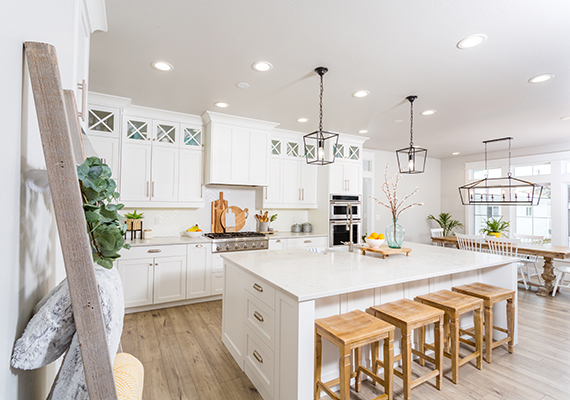
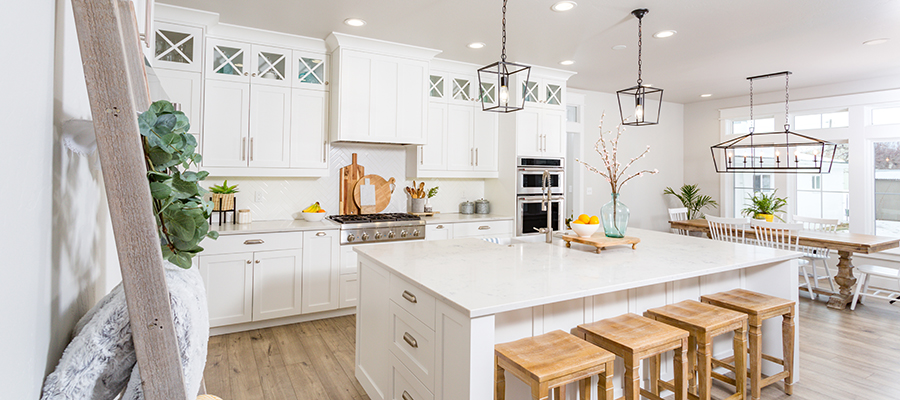
There are certain things that I always recommend to my clients if they are thinking of putting their home on the market in the next five years. Putting some money into updating your home now can make it more appealing to buyers down the line. It will also allow you to enjoy the updates before you finally take the plunge and move.
The following list is my top five recommendations on home improvements.
1. Spruce Up the Kitchen
Most of your time at home is usually spent in the kitchen. Between meals and snacks, the kitchen receives the most foot traffic out of any other room in the home. A full kitchen remodel can be very expensive. As an alternative, you can focus on some key areas. If your cabinets are older, but still in good shape, hire a professional painter to come and repaint them. After they have been repainted, update all the knobs and hardware to a more modern look.
Replace your old countertops with Silestone or quartz. It will bring a fresh look to the kitchen, and they don’t scratch easily, unlike granite.
If the floor is older, either replace it, refinish it, or add something on top. You might want to match the kitchen with the rest of the house. Which brings me to my next point.
2. Replace or Refinish Outdated Flooring
A general rule of thumb is to have hard surface flooring in all of the main areas of your home, especially the living room, dining room, and kitchen as most modern home buyers do not like carpet. You can choose a less expensive option like floating laminate flooring or a more expensive option like engineered or solid hardwood floors depending on your budget.
If you already have hardwoods in your home, and they are refinishable, it might be time to update the color scheme to something more modern. The current trend is to have darker, matte flooring. If you need ideas for colors or simply don’t know where to start, attend an open house at some new builds in your neighborhood and ask them what flooring they used. Model homes usually showcase the current trends, and builders always have a list of materials that they used.
A word of caution, if you are going to replace the flooring in your home, do not mix flooring types. At least not on the same level. The change between different flooring is like a full stop for your brain. It can make a room seem smaller than it actually is.
3. Update the Bathrooms
It is relatively inexpensive to replace the vanities and toilets in your bathrooms. Also, hiring a contractor to re-glaze the tile and bathtub, especially if they are older or an odd color, is a great way to get more use out of what you already have, while making your bathroom seem like new again.
4. Add Recessed Lighting
If your home is older, it might not have as much recessed lighting as more modern builds. Adding recessed lighting to your home will add to the overall mood and functionality of your home. Since it requires working with circuits and electrical wires, I would strongly recommend hiring an electrician. Not only do buyers like well-lit homes, but it will also help with your marketing as light is essential for great photographs. Most home buyers start their search on property websites like Zillow or Realtor.com, and professional photographs help make your home stand out while highlighting the best features to potential buyers.
5. Replace the Roof
If your roof is less than 10 years old, it is a huge selling point for the home. A new roof prevents leaking, water damage, and a host of other problems. I realize that this item can get very pricey, so consider contacting a roofing company to come out and take an assessment. If they find hail damage, they can work with your insurance company to get it replaced for the cost of your deductible.
Looking toward the future and starting now is the key to a smooth, easy home sale later. To get the most out of your home, consider making these improvements today so you have time to enjoy them. If you are thinking about making a move, reach out to me to discuss next steps.

Jean Beatty is a licensed real estate agent in VA, MD, and DC with McEnearney Associates, Inc in McLean, VA. If you would like more information on selling or buying in today’s complex market, contact Jean at 301-641-4149 or visit her website JeanBeatty.com.
Don’t miss a post! Get the latest local guides and neighborhood news straight to your inbox!
8 Paint Colors To Freshen Up Your Home
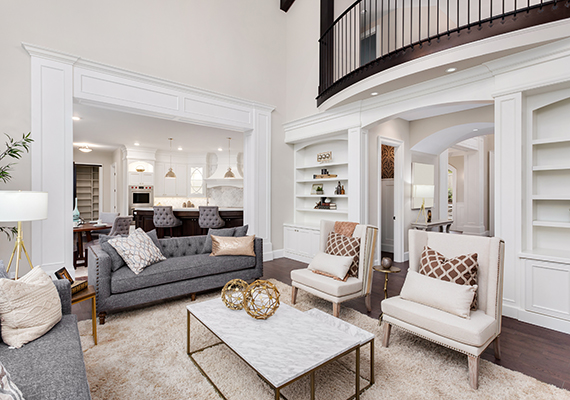
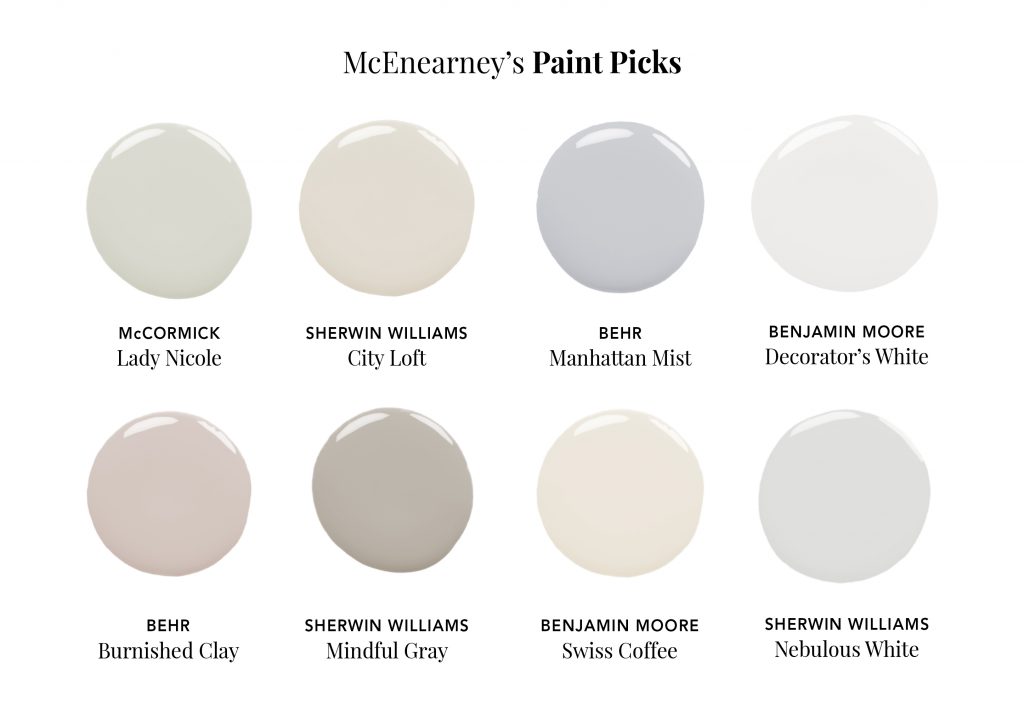
Painting a room’s walls can set the tone for the entire space. Whether you’re starting over and want a clean slate or are preparing your home for the market, a fresh coat of paint can work wonders. Here are a few paint colors McEnearney agents suggested for freshening up your walls:
McCormick Lady Nicole
A light greige (gray-beige, depending on how the light hits it), this McCormick Paint color works great in a bathroom against dark woods and white trim. It gives a hint of color without washing out the walls and would coordinate well with dark grays or greens.
Sherwin Williams City Loft
The new “it” color, City Loft is a greige with a tan undertone. It’s a great choice for hallways, stairways and family rooms that you want to have a neutral feel.
Behr Manhattan Mist
A go-to gray with blue undertones, Behr’s Manhattan Mist would bode well with blues and white trim in bedrooms and dining rooms, without giving an overly-blueish feel.
Benjamin Moore Decorator White
This white with gray undertones color is the perfect selection of an off-white paint suitable for painting crown molding or chair-railing as an accent to grays.
Behr Burnished Clay
Grab this one if you’re seeking a complementary option to darker tans with yellow undertones. While the name may suggest a harsh red, you’ll find Burnished Clay far from it and a rather calming tan instead.
Sherwin Williams Mindful Gray
Sherwin Williams’ Mindful Gray is a light, airy and warm mid-tone gray that will make your molding pop. It’s a very neutral color without any other color undertones. This selection would look great against white cabinets and countertops, beadboard and trim.
Benjamin Moore Swiss Coffee
Part of Benjamin Moore’s Off-White Collection, this very pale-cream color with gray undertones is a solid choice for someone who seeks white walls that aren’t blindingly bright.
Sherwin Williams Nebulous White
For homes that don’t have a lot of natural white, consider Sherwin Williams’ Nebulous White. A warm gray paint, it complements any color around it and gives a very calming effect.
Take a look at our website for all of our listings available throughout Washington, D.C., Maryland, and Virginia.
Don’t miss a post! Get the latest local guides and neighborhood news straight to your inbox!
17 Dreamy Patios and Delightful Gardens On the Market Now
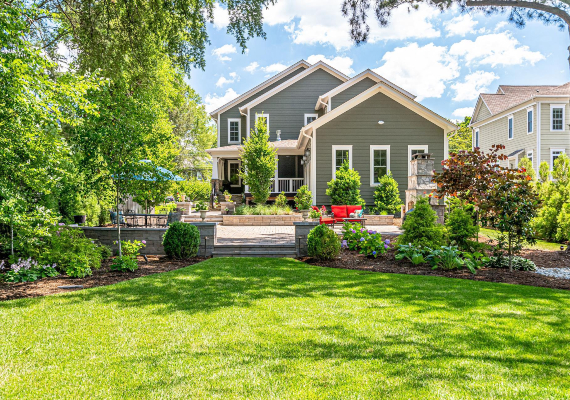
The temperature is up and the sun is out! This means Washingtonians are out looking to enjoy the best of summer – from relaxing or grilling on patios, to water recreation spots in our region, and any number of delights in between. Coronavirus has people looking more than ever for their own private outdoor space, even the demand for homes with private pools is increasing. For many Washington area residents, this is the best time of the year – especially when all the seasonal delights can be enjoyed from the comfort of an outdoor space right at your own home.
Whether you are searching for a private oasis to host friends and family or a perfect place to plant your own garden, these homes on the market now will inspire you to savor summer from home.
217 S Fairfax St, Alexandria VA
Listed by Mary Ellen Rotondo // 703-472-5454
[smartslider3 slider=”45″]
About this home: Welcome to 217 South Fairfax, one of Old Town’s most outstanding and desirable historic properties. This in-town estate offers modern luxury and enduring craftsmanship. Built Circa 1780, the home has been masterfully expanded and updated to modern luxury standards. With over 8,000 sf of luxe living space, the home has 6 bedrooms, 6 and 1/2 bathrooms, and impressive rooms for entertaining and comfortable living. An oversized garage and expansive driveway offer private off-street parking for 5 cars. Additional special features include a subterranean media center, large chefs kitchen with catering pantries, a guest suite with its own kitchen, bath and living rooms, and an historic smoke house recently converted into a SMART office. Extensive custom moldings, original wide-plank hardwood flooring, and six fireplaces with hand-carved limestone mantles set this home apart. The property has been upgraded to modern technical standards with cat 5/cat 6 cabling, cameras and Mobotix panels throughout the house for one-touch controls for Savant and smart home automation. Located only 2 blocks from King Street and the waterfront, the house sits in a prime location and on a spacious double lot. The quarter acre lot is graced by lush lawns, manicured specimen gardens and a lovely patio for outdoor living and entertaining . 217 South Fairfax — Old Town’s finest address.
[divider height=”30″ style=”default” line=”default” themecolor=”1″]
27884 Dixon Creek Ln, Easton MD
Listed by Joan Reimann // 703-505-5626
[smartslider3 slider=”42″]
About this home: Capture the essence of understated Eastern Shore elegance in this waterfront contemporary designed by renowned architect Alan Meyers. Built to highlight the water views and the lovely 3.5 acre landscaped grounds, the home is a showpiece of quality craftsmanship and unparalleled style. This stunning residence is located in exclusive Ratcliffe Farms, an enclave of custom luxury homes just minutes from downtown Easton. Sited on the shores of Dixon Creek, a tributary of the Tred Avon River, this quality residence offers easy access to the famed cruising and fishing waters of the Chesapeake Bay. Thoughtful design prevails both inside and out offering a desirable main level master suite, a separate guest wing, a chef’s kitchen with top of the line European appliances, a large open concept living area and an inviting sun porch. The luxury finishes extend out to the 1,000+ square foot patio with outdoor kitchen and hot tub. The property has been expertly landscaped with meandering paths and walkways to enjoy the peaceful waterfront setting with ample room to add a pool. Additional amenities include an 80 foot pier and dock with 10,000lb lift, and a 3 car garage with high-end epoxy flooring. Adjacent Lot 2 is available for purchase as a separate parcel. Come escape to Ratcliffe Farms, your private waterfront paradise, yet just minutes to the shops and restaurants of Easton.
[divider height=”30″ style=”default” line=”default” themecolor=”1″]
317 Saint Asaph St, Alexandria VA 22314
Listed by Babs Beckwith // 703-627-5421
[smartslider3 slider=”43″]
About this home: Circa 1750, this 4/5 BR flounder house on a double lot offers 5 wood-burning fireplaces, spacious rooms for entertaining, original pine floors and moldings, 2 staircases, and a sunny eat-in kitchen. A second-story Charleston-like porch overlooks the lush garden. 3 off street parking spaces.
[divider height=”30″ style=”default” line=”default” themecolor=”1″]
8720 Plymouth Rd, Alexandria VA
Listed by Tracy Dunn // 571-212-3658
[smartslider3 slider=”47″]
About this home:Beautiful Craftsman with the most pristine and impeccable yard in Plymouth Haven! This 5 bedroom, 4 and a half bath “Jefferson” model was built by Wakefield Homes in 2014. Since that time, the owners have thoughtfully improved the front and back yards with extensive landscaping and hardscaping, outdoor lighting and an irrigation system. The backyard is an absolute oasis of natural beauty. The large patio with a wood-burning stone fireplace is a perfect spot to entertain or relax . The interior of the home has been carefully and attentively maintained and upgraded as well including: custom bookshelves & workspaces in the two main level offices, lockers/cubbies as you enter the home from the garage, a generous sized bedroom with ensuite on the lower level, plantation shutters throughout, new carpeting, recessed lighting, an alarm system, and more! The home boasts 9ft+ high ceilings, fabulous moldings/trim detail, solid core doors, uniform hardware & fixtures, and wonderful lighting on all levels. The main level flow mixes formal and casual spaces and feels airy and open. The kitchen has stainless appliances, granite countertops, a large island, and a walk-in pantry. The master suite is sun-filled and roomy with a sitting room, two walk-in closets, and a substantial sized master bath. All bedrooms have bathrooms attached and are all of good size and scope. The basement is spacious and has two additional unfinished storage rooms, along with a bedroom and bathroom. The screened-in porch and covered front and side porches are wonderful spaces to enjoy the lush yard in a comfortable and cozy setting. This home is a jewel. Move in ready/3 car garage.
[divider height=”30″ style=”default” line=”default” themecolor=”1″]
7007 Springville Ct, Springfield VA
Listed by Annette Hinaman // 571-216-4411
[smartslider3 slider=”44″]
About this home: Welcome to 7007 Springville Court, an immaculate, like-new and lightly lived in Colonial style home built in 2014 on a cul-de-sac at Spring Village Estates. This meticulously maintained light and bright 5935 sq. ft property offers 6 bedrooms, 4 bathrooms, an elegant living room with gas fireplace, separate formal dining room with butlers pantry, study, breakfast area, oversized luxury kitchen and pantry, separate laundry room, main level bedroom and bath, lower level recreation room, game area, two large storage rooms and a two car garage. Highlights include gleaming hardwood floors on main level, extra-wide staircases, extensive cherry kitchen cabinetry, stainless steel appliances (GE Profile, Samsung) kitchen and bathroom granite countertops, plantation shutters and wood blinds throughout, front loading LG washer and dryer, recessed lights, fitted closet systems, new architectural shingle roof (2019), new HVAC systems (2018 and 2020), and a 3 level elevator shaft currently fitted out as walk-in storage closets. In addition to the stunning wooded views and privacy from the backyard, exterior features on this 1/3 acre lot include a main level covered porch off the kitchen, stairs leading to a hardscaped terrace, beautifully maintained lawns surrounding the house, wood fencing, 6 zone irrigation system and a Dutch garden shed. At just 1 mile from the HOV lane straight into DC and 2 miles to the metro and shops and restaurants of Springfield Town Center, this property enjoys an unbeatable location for easy living and commuting.
[divider height=”30″ style=”default” line=”default” themecolor=”1″]
212 Green St, Alexandria VA
Listed by Lauren Bishop // 202-361-5079
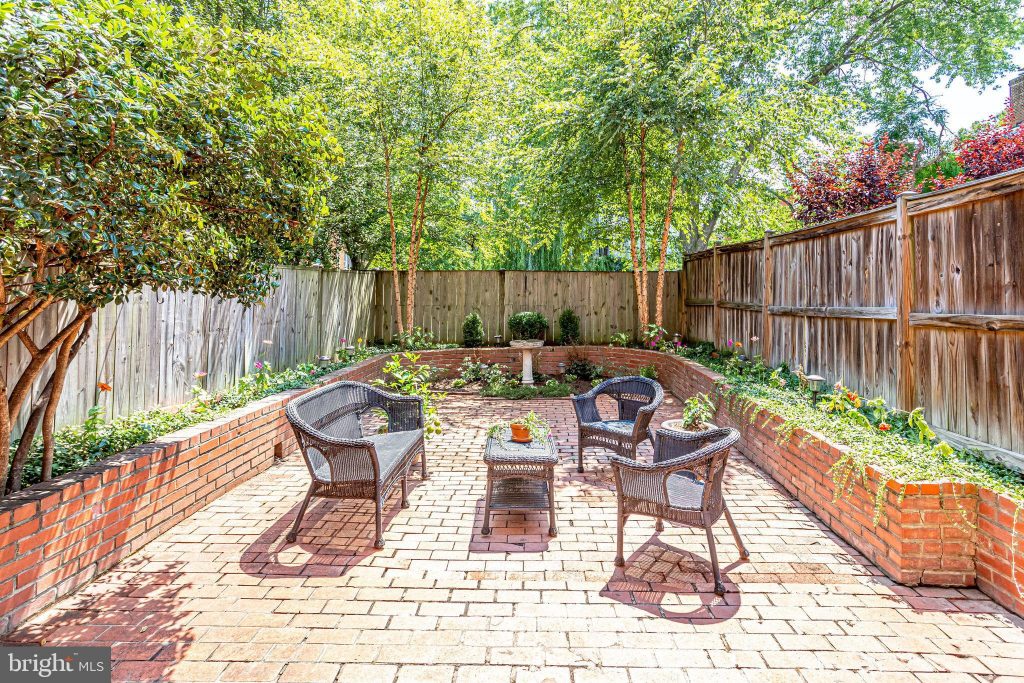
About this home: This fabulously renovated Yates Gardens townhouse offers an open main level living area with gorgeous kitchen, island seating, abundant storage including a custom pantry, wood burning fireplace, large windows allowing generous natural light and a main level half bath. The spacious lower level includes a family room, additional wood burning fireplace, built-in bookcases, separate laundry, chic renovated full bath and access to the private and serene bricked back patio and garden. A wonderful layout on the upper level with 3 bedrooms and hallway skylight contributing to additional sunlight. Off-street parking for 1 car and easy street parking for additional vehicles. HVAC, hot water heater and furnace replaced in 2018 and added an air filtration system (Air Scrubber Plus with ActivePure technology removes up to 99.9% of the harmful contaminants in your home). Just steps to the Potomac River, Jones Point Park, Windmill Hill Park, Lyles Crouch Elementary and a few blocks to the shops and restaurants on King Street. Easy access to King Street Metro, National Airport, DC, Amazon HQ2 and major commuter routes.
[divider height=”30″ style=”default” line=”default” themecolor=”1″]
315 S Lee St, Alexandria VA
Listed by Sally Harper // 703-517-2849
[smartslider3 slider=”41″]
About this home: Historic semi-detached 2.5 story 1852 clapboard townhouse exudes simple elegance and character. The front door opens to reveal an unusual feature: a lovely long hallway floored with 28-foot pine boards cut to exact length, laid without joints. Original floors and woodwork throughout. Double parlor with built in bookcases, formal dining room, and eat-in country kitchen make an attractive setting for family life and entertaining. Five bedrooms, including two under third floor eaves that are perfect for children or au pairs, five working fireplaces, half -basement with front and rear access, and a lovely secluded rear garden, where a wrought iron gate leads to a large (over 1200 square feet) private parking area with space for up to 5 -6 cars, a rare asset in Old Town that offers numerous possibilities. Access flows from Lee Street through the gated” horse alley”, into the garden and out the rear alley to Fairfax Street. Two blocks to the waterfront and the lively ambiance of King Street. A Must See!!
[divider height=”30″ style=”default” line=”default” themecolor=”1″]
6516 Lakeview Dr, Falls Church VA
Listed by Susan Tull O’Reilly // 703-509-7222
[smartslider3 slider=”46″]
About this home: Here’s your chance to own a waterfront home in Lake Barcroft. Go swimming/boating/fishing/ice skating from your own back yard! Plus, this unique home has an enormous level lot – very rarely found here! Add a pool if you wish, host a wedding – plenty of space here! Wonderful, welcoming home has all the Mid Cent features en vogue including paneled peaked ceilings, stunning full length porch and upper level deck, large picture windows, exposed brick walls and a flexible floor plan – use the rooms as you wish! Gorgeous gleaming hardwoods, updated kitchen, vaulted ceilings and built ins. This is a special home -add your personality and make it your own. Imagine owning a lake home – this summer! Go kayaking out your back door! Quick walk to the Women’s Garden – a beautiful retreat or Beach 2! Lake Barcroft is a private lake community featuring 5 sandy beaches. Nature abounds in this special respite located inside the Beltway. Relax…you’re home! Great little gem – lots of potential- come see it!
[divider height=”30″ style=”default” line=”default” themecolor=”1″]
8732 Plymouth Rd, Alexandria VA
Listed by Sandy McMaster // 571-259-2673
[smartslider3 slider=”48″]
About this home: Finally, a luxury home that showcases thoughtful and refined elegance. This gorgeous home was custom designed and built in 2001. The original owners have taken impeccable care and pride in the curation of the property. They took the time to nurture extensive exterior landscaping that provides a beautiful backdrop to this stunning home. Today, the premium (flat) lot features a striking slate patio (perfect for entertaining), in-ground sprinkler system, manicured mature plantings and a detached garage. An additional stand-alone shed keeps the yard looking neat and organized. While the grounds are breathtaking, the mahogany front porch makes an amazing first impression. The extra wide serene front porch was specifically designed to be a spot where conversations can linger and friendships grow deeper. Stepping inside you’ll be struck by the dignified and elegant finish. A lovely center hall foyer opens to a stunning formal dining room, home office space, formal living area and more. A full kitchen renovation in 2017 will satisfy any chef. Granite and stainless steel appliances sparkle under loads of natural light. Those with the most discerning palate will revel in this kitchen. The food may actually taste better when using such a fantastic space. For the baker, the custom kitchen aid cabinet lift means easy access for that handy appliance! This true “open concept” kitchen lives large. A cozy seating area as well as a casual dining space surround a gorgeous kitchen island. For those of you who love the sound of music, sonos speakers have been built into the patio, porch and main level. A home with this much style, space and refinement is rarely offered.
[divider height=”30″ style=”default” line=”default” themecolor=”1″]
6306 30th St N, Arlington VA
Listed by Betsy Twigg // 703-967-4391
[smartslider3 slider=”49″]
About this home: Located in the Nottingham, Williamsburg, Yorktown school district, this home is sited on a sought after street, and is walkable to the schools, Tuckahoe Park and Playground, Williamsburg Shopping Center, and the East Falls Church Metro Station. In addition to the traditional living room and dining room, the home offers a large private office, family room with vaulted ceiling, and stone fireplace. The refreshed kitchen features crisp white cabinets, granite countertops, Viking appliances, and a breakfast area with built-in cabinetry. Doors from the breakfast area lead to the refurbished deck and stairs to the level, fenced rear yard. An expansive flagstone patio was added in 2015 and is surrounded by mature landscaping, enhanced by uplighting. The outdoor space is ideal for social distance entertaining. The yard also provides space for a swingset (which conveys), sports, and gardening. Lighting accents landscaping in the front yard of the home, too. With doors leading to the back yard, the home has excellent flow for entertaining and daily living. A spacious home in pristine condition and in an enviable location.
[divider height=”30″ style=”default” line=”default” themecolor=”1″]
6512 Cygnet Dr, Alexandria VA
Listed by Cindy Clemmer // 703-966-0403
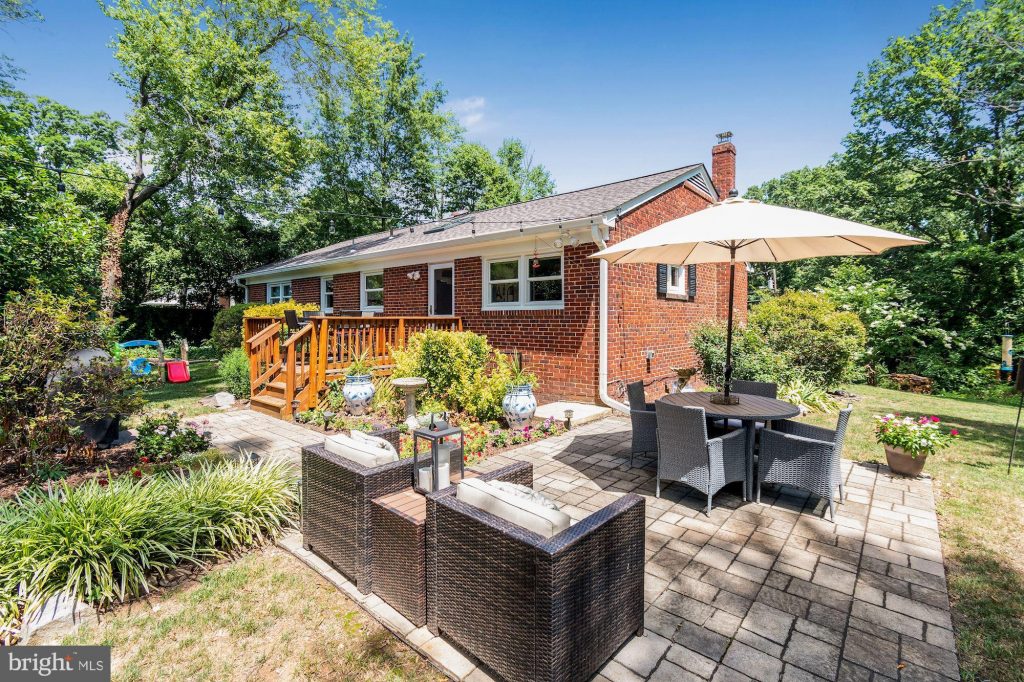
About this home: Belle Haven Terrace Beauty! All Heavy Lifting Has Been Done! 3 BDRS/2.5 BA, Custom Closets done in 2019, Updated Kitchen & Baths, Gorgeous Hardwoods on Main Level, Sep Dining Room Just off of Kitchen. Perfect Deck and Outdoor Patio is an awesome retreat! Landscaped and Hardscape to owner’s delight! Property is located next to land owned by National Wildlife Federation. LL is Partially finished w/large full bath. Basement has full utility room, washer/dryer, walk-out to backyard, also has entrance to Garage. Tons of Storage.What’s New? Roof & Skylights March 2020, New Windows -2017,New HVAC Furnace/A/C-2018 May, New Garage Door & Motor -2018, Washer/Dryer -2016, New Kitchen Door w/Windows – 2017, LL New Exterior Doors – 2019, New BDR Closet Doors -2019, Attic Fan – 2016. Virtual Open House Face Book – August 1, 11:00 AM. https://facebook.com/clemmerandschuckhomes Live.
[divider height=”30″ style=”default” line=”default” themecolor=”1″]
4512 Dolphin Ln, Alexandria VA
Listed by Kate Patterson // 703-627-2166
[smartslider3 slider=”50″]
About this home: SPECTACULAR CUSTOM CONTEMPORARY ON BEAUTIFULLY LANDSCAPED LOT WITH EXTENSIVE GARDENS, IN GROUND POOL AND OUTDOOR KITCHEN! VACATION AT HOME IN A TROPICAL PARADISE in Yacht Haven, just minutes from Old Town! This home is incredibly well designed and well articulated, with outdoor entertaining spaces and cozy interiors with a dash of Florida and California! Enjoy living and working at home, with your own private in ground pool, with waterfall, gorgeous lush landscaping and outdoor kitchen in a custom designed contemporary home with open living spaces, gourmet kitchen, designer baths and fabulous family room with gas fireplace, guest quarters or home office and wine cellar. The dining room is styled as a Billiards room, with koi swimming around the central platform of the room in an enclosed moat. The lower level opens to an open air covered patio with hot tub, leading to a fabulous deck with koi pond and fire pit, just steps from the outdoor kitchen and pool! As an added bonus there is a separate over sized two car garage with full bath, guest area, and enormous party room above with fully equipped bar steps from the outdoor kitchen and pool, inviting summer parties and family gatherings!Living at home is a joy when you can live in a PARADISE like this just minutes from DC!
[divider height=”30″ style=”default” line=”default” themecolor=”1″]
17641 Raven Rocks Rd, Bluemont VA
Listed by Geri Deane // 703-615-4126
[smartslider3 slider=”51″]
About this home: Looking for a COVID FREE Retreat to call your own…. Look no further…. 2 Spacious bedrooms, 2.5 Full Baths, Approx 2,500 sq. feet, 1.73 acres, beautifully appointed both inside and out. The minute you pull in the circular driveway, lovely landscaping greets you, multiple outdoor living spaces, private and peaceful you will never want to leave. Original cabin established in 1936, then updated over the years to include Kitchen/Dining and Upper Guest Retreat w/ensuite full bath & walk-in closet, Master Retreat, and lower-level Office. Interior Features consist of Australian Cypress Floors, Sub-Zero Refrigerator & 4 Burner Wolf gas range with griddle and infrared searing, Frankie Villeroy & Boch farm sink below your kitchen window… Granite counters & island, 6 ft. Rumford Fireplace in Dining Room with handmade bricks, luxurious Master Bath and Guest Bath & MORE…. The exterior is perfect for a STAYCATION… multiple outdoor living areas (bar, stone patio w/pergola, fish pond & waterfall, BBQ Grill deck area, and 2 firepits to enjoy and take advantage of throughout the year…. Studio, Potting & Tool Shed, Wood Shed & Storage Shed are also a plus. Directv for Cable and AT&T mifi for internet. New Central Air Conditioning and Shake Roof just installed. Check out the walking video tour which showcases all of the fantastic features this beautiful Bluemont retreat has to offer….https://player.vimeo.com/video/440618864 Minutes from Rte 7, the Appalachian Trail, Wineries, Breweries, Shenandoah River
[divider height=”30″ style=”default” line=”default” themecolor=”1″]
1904 Belle Haven Rd, Alexandria VA
Listed by Susan Craft // 703-216-4501
[smartslider3 slider=”52″]
About this home: LUXURY VIDEO: bit.ly/1904BelleHaven Modern design meets Historical Architecture to include $200K (Brand New HVAC) in gorgeous renovations in this traditional 4 BR, 3.5 BA brick Georgian colonial home in prestigious Belle Haven community. 3,000 sf HOME PLUS 528 sf GARAGE. Gorgeous Master Suite, walk-in CA closets, hardwood floors throughout, Palladian bookcases, dentil molding, finished lower level recreation room comes fully furnished, large 2 car garage. Great for entertaining. Private beautifully landscaped backyard with Trex porch, hardscape patio and fire pit. Awesome Location. Easy access to Rt. 1, GW Parkway, Ft. Belvoir, Old Town, National Airport, National Harbor, DC and 5 miles to Amazon HQ. Alexandria VA, and excellent Fairfax County Schools. Move in Ready! What I love about this house: Rooms are open and easily interchangeable for HOME SCHOOLING or HOME OFFICE as HOMEWORK/OFFICE furniture & Recreation Room Furniture Convey. Dining Room can also function as CONFERENCE ROOM/HOME OFFICE. Fully or partially furnished home an option. Convenient location, yet the community and house feel like home. You can walk the Belle Haven hills and admire the homes and beautiful landscaping, play golf, tennis or swim at the Belle Haven Country Club, hop on the trail for a bike ride to Old Town, Washington DC, Mt. Vernon. Walk to the cozy eatery, DRP Belle Haven and enjoy the convenience of the Belle View Shops, Dog Park and Recreation Center.
[divider height=”30″ style=”default” line=”default” themecolor=”1″]
3205 McKinley St NW, Washington DC
Listed by Anslie Stokes Milligan // 202-270-1081
[smartslider3 slider=”53″]
About this home:Welcome to 3205 McKinley ST NW; a completely renovated Dutch Colonial, with timeless curb appeal, just two blocks to Lafayette School & Park and three blocks to Broad Branch Market in the heart of Chevy Chase, DC. After an extensive renovation in 2016 this home now features four fully finished levels with five bedrooms, four and one half beautiful bathrooms, a stunning gourmet kitchen and fully fenced front and rear yards. Additional features include: a wood burning fireplace in the living room and owner’s bedroom, hardwood floors throughout the main and second floor, replacement windows and exterior doors throughout the entire home, foam insulation for energy efficiency, two washers + two dryers, a wet bar in the lower level, excellent storage and a screened-in porch. Open House Sunday August 2nd, 12pm – 2pm (masks and sign-in required, only one party will be allowed inside the house at a time).
[divider height=”30″ style=”default” line=”default” themecolor=”1″]
4325 Gingham Ct, Alexandria VA
Listed by Dan Muller and Susan Minnick // 703-883-7550
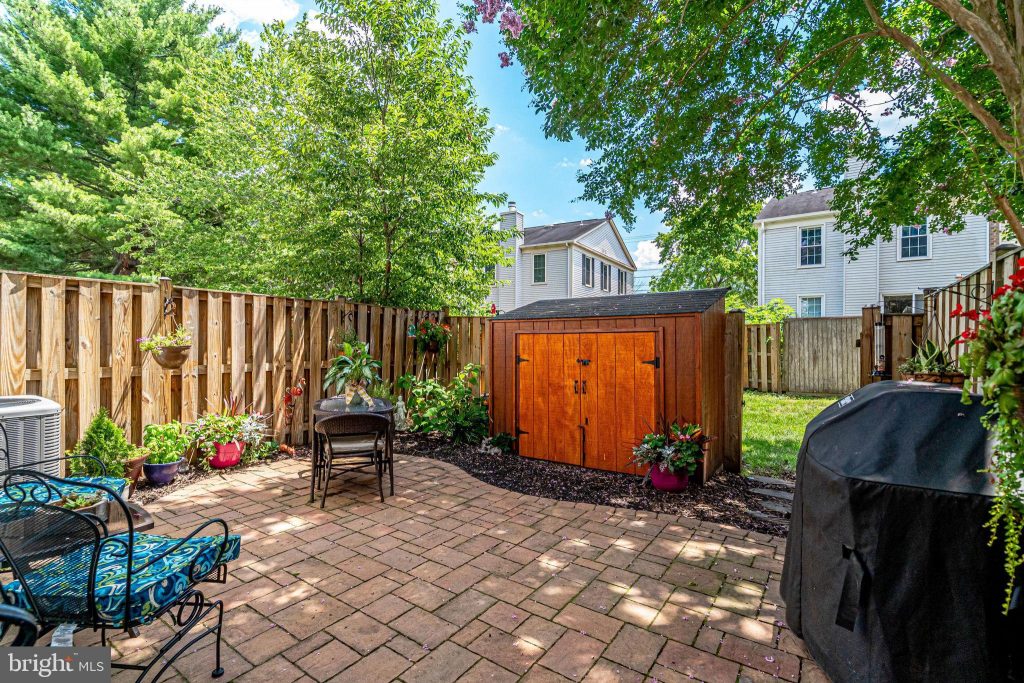
About this home: Turn Key, You’ve been waiting for this one! Beautifully maintained & updated beginning w/ Roof & Windows 09′, A/C 16′, Paint, Carpet, Lighting & Ceiling Fan, Patio all in 17′, Kitchen Remolded 18′, Master Bath & Powder Room 18′, GE Profile Stainless Steele Appliances installed July 25th 20′. Over sized Ceramic Floor entry, Hardwood Din/Liv, En suite Master Bath, LL-Full Bath, Wd Burning Frpl. Welcoming Foyer enhanced w/updated powder room, from there you find yourself in a lrg dining room w/hardwood floors (Brazilian Cherry), step down to a gracious Liv room with SGD to a cozy patio w/ landscaped yard fully fenced with lrg shed & gate. Don’t miss the beautifully remodeled white kitchen. Upstairs freshly painted w/Agreeable Grey, tasteful lighting & Updated baths, Cozy Lower level w/full bath, rec room w/wood burning fireplace, lrg storage room & laundry. Abundant parking with one assigned space , easy access to Old Town Alexandria, Van Dorn Metro Station and I 495
Take a look at our website for all of our listings available throughout Washington, D.C., Maryland, and Virginia.
Don’t miss a post! Get the latest local guides and neighborhood news straight to your inbox!
9 Amazing In-Ground Pools on the Market Now
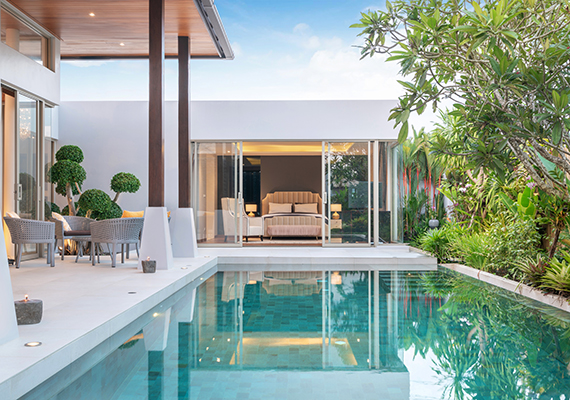
It’s official, summer is here! The pool covers are off and the water wings are out. With the start of summer also comes the sweltering heat that us Washington metropolitan area residents are all too familiar with. What better way to beat the heat than to dive into your brand new pool?! Whether you’ve always wanted a pool or you are considering a home upgrade, here’s a look at nine of the coolest in-ground pools on the market now!
4512 Dolphin Ln, Alexandria VA
Listed by Kate Patterson // 703-627-2166
[smartslider3 slider=”37″]
About this home: SPECTACULAR CUSTOM CONTEMPORARY ON BEAUTIFULLY LANDSCAPED LOT WITH EXTENSIVE GARDENS, IN GROUND POOL AND OUTDOOR KITCHEN! VACATION AT HOME IN A TROPICAL PARADISE in Yacht Haven, just minutes from Old Town! This home is incredibly well designed and well-articulated, with outdoor entertaining spaces and cozy interiors with a dash of Florida and California! Enjoy living and working at home, with your own private in-ground pool, with waterfall, gorgeous lush landscaping and outdoor kitchen in a custom-designed contemporary home with open living spaces, gourmet kitchen, designer baths and fabulous family room with gas fireplace, guest quarters or home office and wine cellar. The dining room is styled as a Billiards room, with koi swimming around the central platform of the room in an enclosed moat. The lower level opens to an open air covered patio with hot tub, leading to a fabulous deck with koi pond and fire pit, just steps from the outdoor kitchen and pool! As an added bonus there is a separate over sized two car garage with full bath, guest area, and enormous party room above with fully equipped bar steps from the outdoor kitchen and pool, inviting summer parties and family gatherings! Living at home is a joy when you can live in a PARADISE like this just minutes from DC!
[divider height=”30″ style=”default” line=”default” themecolor=”1″]
19729 Ridgeside Rd, Bluemont VA
Listed by June Hambrick // 540-878-8220
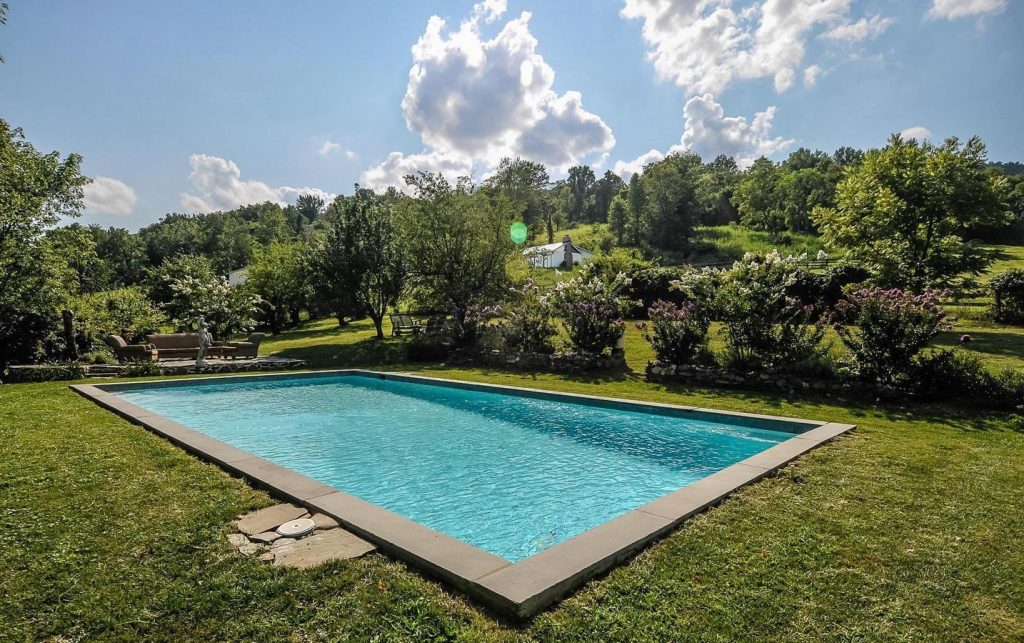
About this home: Ultimate opportunity for relaxed living, retreat. Exquisite panoramic views from Southern Fauquier to Tysons to Sugar Loaf and beyond. Kitchen features Viking 6-8 burner stove top, double convection ovens, 3 dishwashers, sinks, disposals. Marble and limestone countertops. Butlers pantry and back pantry. Loaded with upgrades. Hardwood flooring throughout, high-end solid wood doors throughout out. Marble bathrooms. 4 zone heat and air. Comfort and beauty combined near Middleburg, Upperville, Purcellville and Leesburg. Loudoun county AR2 zoning, 6-8 stall stable, paddocks, inground pool. Additional 64 acre lot available making total of 104 acres. Contact listing agent for more information, see: #VALO397222
[divider height=”30″ style=”default” line=”default” themecolor=”1″]
40850 Robin Circle, Leesburg VA
Listed by Bay Buchanan // 703-994-2323
[smartslider3 slider=”35″]
About this home: Grab this rare opportunity to own one of only 16 custom homes, each unique, in the parklike setting of Dunrobin. A complete entertainment center on the lower level includes an indoor heated pool, indoor basketball/racquetball court, sports bar and game room. Only minutes from the charming town of Leesburg, this beautiful French Country Manor offers the privacy and serenity of a secluded resort. Set on 3.5 professionally landscaped acres of lush Virginia countryside, you can not escape the magnificent views offered by this remarkable home. The lower level includes 3,200 sq ft dedicated to having fun. All recently renovated, there is a Sports Bar, a game room, a heated indoor swimming pool with cabana and a racquetball court with a hoop for half court basketball games. Who needs a resort when you live at 40850 Robin Circle?
[divider height=”30″ style=”default” line=”default” themecolor=”1″]
1201 Key Dr, Alexandria VA
Listed by Jodie Burns // 571-228-5790
[smartslider3 slider=”34″]
About this home: Invisible from the street and set on two and a quarter acres of woodland with American Elms, fig trees, pine, magnolia, wisteria and dogwood, this one of a kind property is a true sanctuary away from the bustle of modern Alexandria. With four bedrooms and four bathrooms, the low slung Main House, designed in 1939 by Frank Lloyd Wright-trained architect, Charles Callander, remains nearly unchanged from 1940. Designed for entertaining, the home features a variety of gathering spaces, inside and out, including a screened-in porch built around a giant sycamore tree, a second-story balcony overlooking the large expansive yard, and outdoor access from all main level rooms to brick seating areas and a covered patio. A separate 1700 SF two-story guest house overlooking a large swimming pool was designed by another Wright apprentice, Jone Thurmond, and compliments the design of the Main House with similar architectural details inside and out.
[divider height=”30″ style=”default” line=”default” themecolor=”1″]
5694 Winter Wood Ln, Bealton VA
Listed by Jonathan Kennedy // 202-750-4050
[smartslider3 slider=”36″]
About this home: The property offers multiple potential income streams, subdivision potential, and may be eligible for the National Register of Historic Places. Agricultural Best Management Practices (BMPs) are in place to include water piped directly to automatic livestock watering tanks.The star of the show, 5694 Winter Wood Lane is an early 1900s farmhouse with 3 bedrooms and 3 full bathrooms on 35 acres. The home was thoughtfully restored in the 1980s. Home and guest house are surrounded by beautifully manicured gardens complete with salt water swimming pool, doggie playpen, fenced in blueberry patch with 18 healthy bushes, and a run-in shed.
[divider height=”30″ style=”default” line=”default” themecolor=”1″]
If you’re in the market for something more extravagant or you just like to dream, be sure to take a look at these properties with in-ground pools offered for sale through our international member organization, Luxury Portfolio International.
Unique and Exceptional Opportunity, Sion, Switzerland
Listed by CI Exclusive Properties | +41 (0)22 319.89.15
[smartslider3 slider=”38″]
About this home: Unique and exceptional opportunity in the canton of Valais.
Situated in a residential area, this brilliant property enjoys an extraordinary view on the Alps and benefits from last technologies (home automation and sound system everywhere), by upper upscale arrangements, by a security system (outside cameras, been for imprints for the entrance, the alarm) and of a system of moistening and dehumidification in all the rooms, this property of 5 rooms in the vast volumes for a total surface of more than 1’000 square meters.
An internal swimming pool with a space SPA, but also a magnificent swimming pool outside overflowing, a sublime one landscaped and enclosed garden, two big courts of separate entrances, a place setting for two vehicles, as well as a garage complete it.
Be allowed seduce by the inescapable charm of this outstanding property!
[divider height=”30″ style=”default” line=”default” themecolor=”1″]
Paradis Sur Mer Cayman Islands, Grand Cayman, Cayman Islands
Listed by Jeremy Hurst & James O’Brien, IRG – International Realty Group Ltd. | 345.623.1111
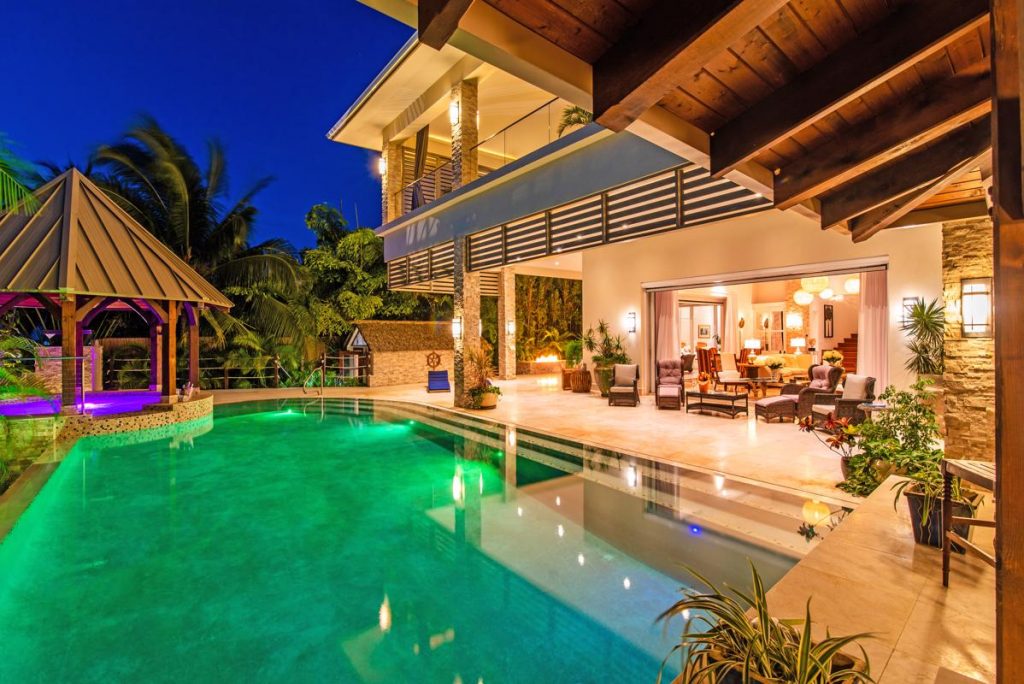
About this home: A truly stunning home and undoubtedly Rum Point’s most exclusive beach front Villa. Drive through ornate electric gates, hand-crafted in Africa, to a gated courtyard with double garages either side with Parking for 6-8 large vehicles. Above the garages are two guest apartment suites. Enter through the hand carved main door into the palatial living space with floor to ceiling windows and doors, presenting the gorgeous ocean views over the ultra-private pool/Jacuzzi and beach. Fully immerse oneself in the spectacular location of Rum Point, world famous for its crystal-clear cobalt waters and powdery white beaches. This beach front villa has too many luxury amenities to mention; there is a private dock with launch pad for water toys and large boats. The main house offers more than 11,5000 square feet of generous living space. There are six bedrooms all en-suite including a large master with majestic views of the ocean, pool and private beach. Hurricane-rated doors and windows enhance not only views but security too. This home is a fortress and every security detail has been carefully engineered seamlessly into its design. This is an energy efficient home, with mature tropical landscaping throughout, which does not require irrigation. ‘Paradis Sur Mer’ is a perfect destination to rival any other uber-luxury beachfront villa and destination globally.
[divider height=”30″ style=”default” line=”default” themecolor=”1″]
Fabulous Estate in the Rose Valley, Kazanlak, Bulgaria
Listed by Unique Estates | +359 882600600
[smartslider3 slider=”39″]
About this home: Unique Estates has the pleasure of presenting to your attention this fairytale mansion, spread on land of 98 000 sqm., between Stara Mountain and Sredna Gora Mountain, in the famous Valley of the Roses. The park is beautifully landscaped with many Mediterranean plants and local trees. To the property can be added second property with land 21 600 sqm. Through the estate is running mineral water from own mineral spring, used for healing and for bottling. Big entertainment center with indoor and outdoor pools, additional water spaces. Additional house for staff and security. The total built-up area of all buildings is 5 982 sqm.
[divider height=”30″ style=”default” line=”default” themecolor=”1″]
Villa Marine Lago, Terres Basses, St. Maarten
Listed by Sunshine Properties | (721) 544-4498
[smartslider3 slider=”40″]
About this home: Private Yacht Marina & 2 pools. With a superb waterfront location this beautiful villa is located in a very exclusive and secure residential community of only six villas in the heart of Terres Basses on the French side of St. Martin. With it’s own private marina Villa Marine Lago has dockage for all your water toys. The villa offers outstanding views of Simpson Bay, the Caribbean Sea and the islands of Saba, St Eustatius and St. Kitts. Situated on 2 acres this spacious open rooms, the home is centered round a generous pool and airy deck area. While the master suite enjoys it own enclave with an open deck area adjacent, with a pool . Leading from the main pool is a large open-plan living and dining area, a well- equipped kitchen. The tall patio door open to give the property extraordinary water vistas both during the day and at night time. The spacious bedrooms open off the pool area and each have en suite bath. The residence enjoys the use of a tennis court. The beautifully landscaped property is completely fenced and has an electronic gate.
Take a look at our website for all of our listings available throughout Washington, D.C., Maryland, and Virginia.
Don’t miss a post! Get the latest local guides and neighborhood news straight to your inbox!

 Facebook
Facebook
 X
X
 Pinterest
Pinterest
 Copy Link
Copy Link
